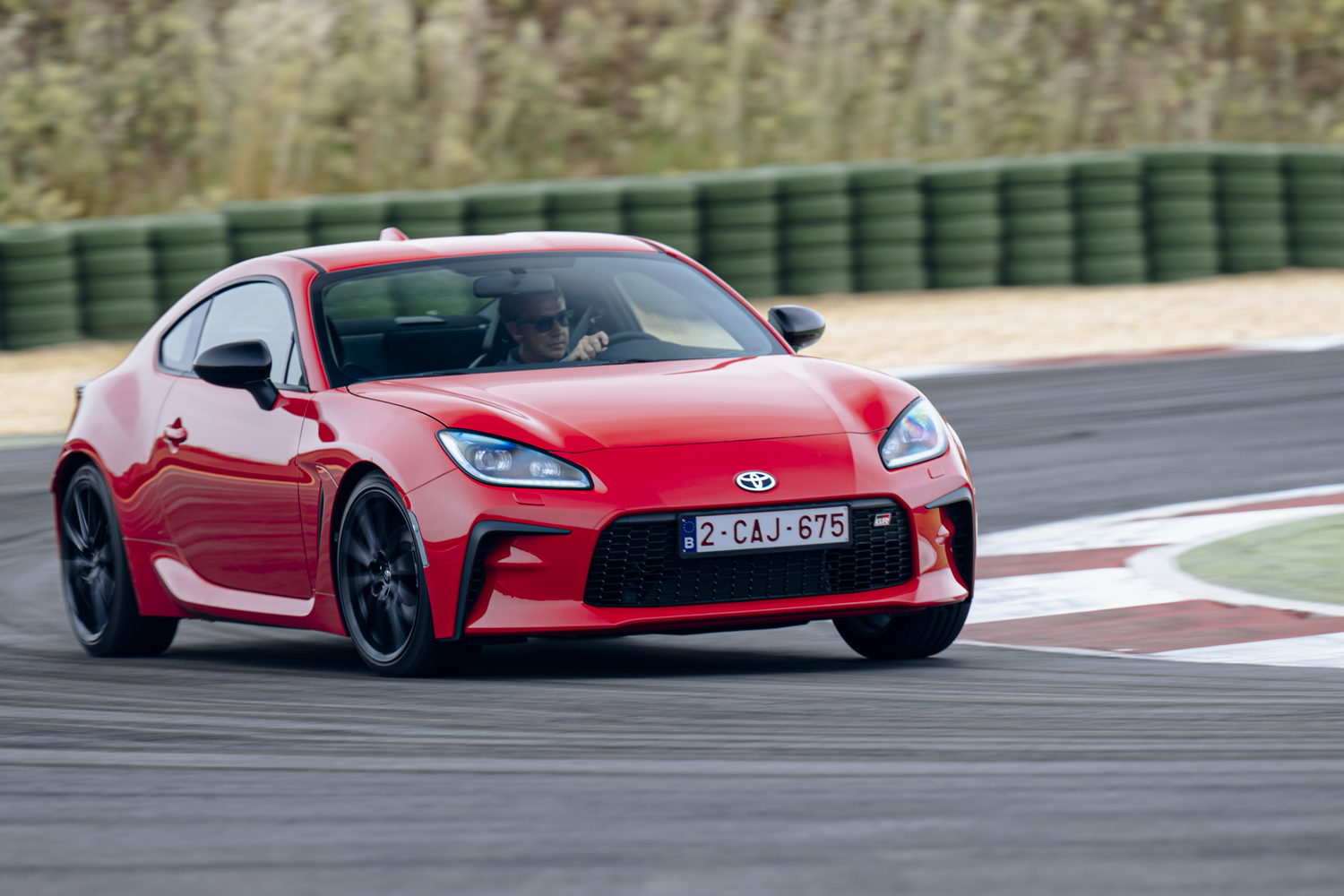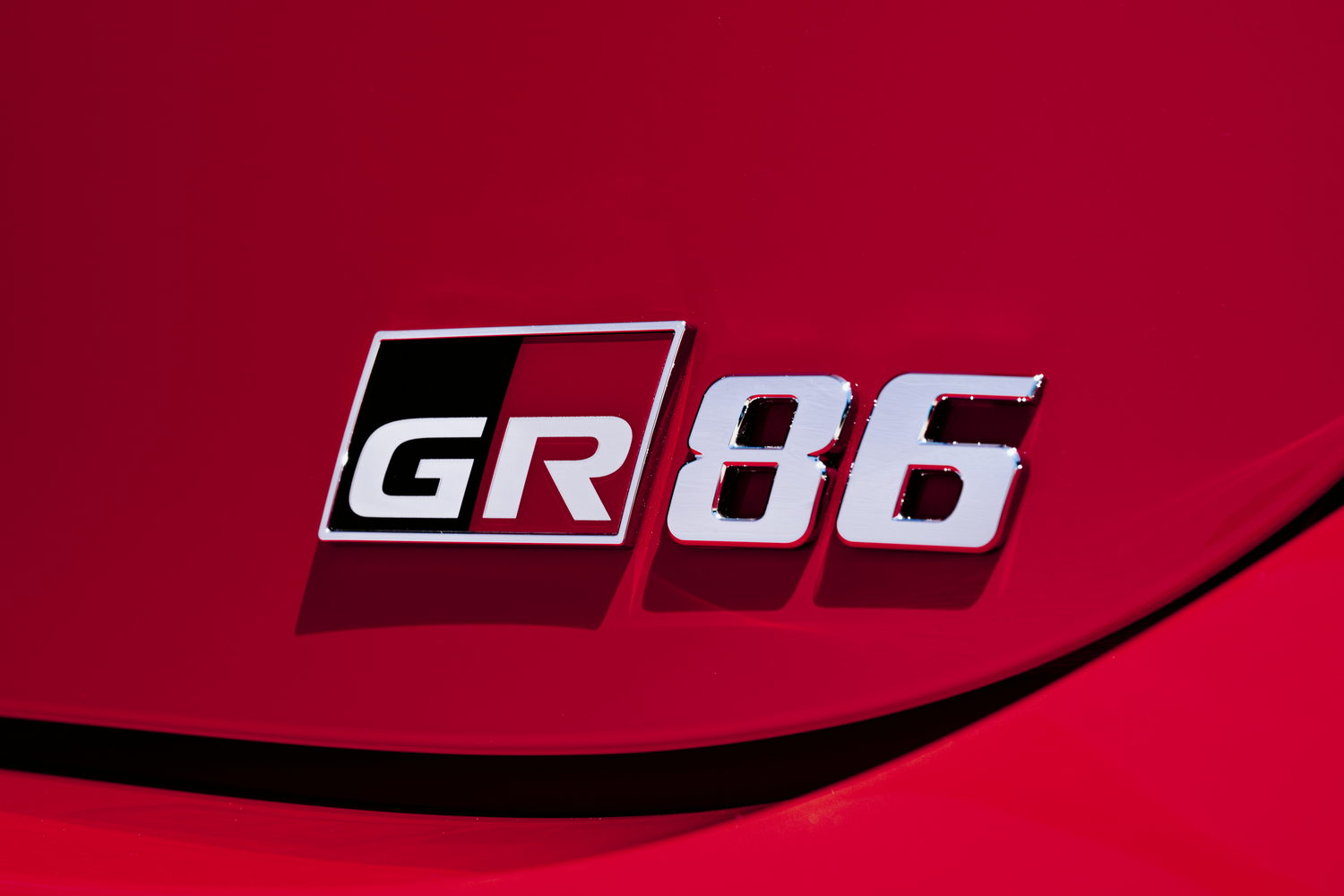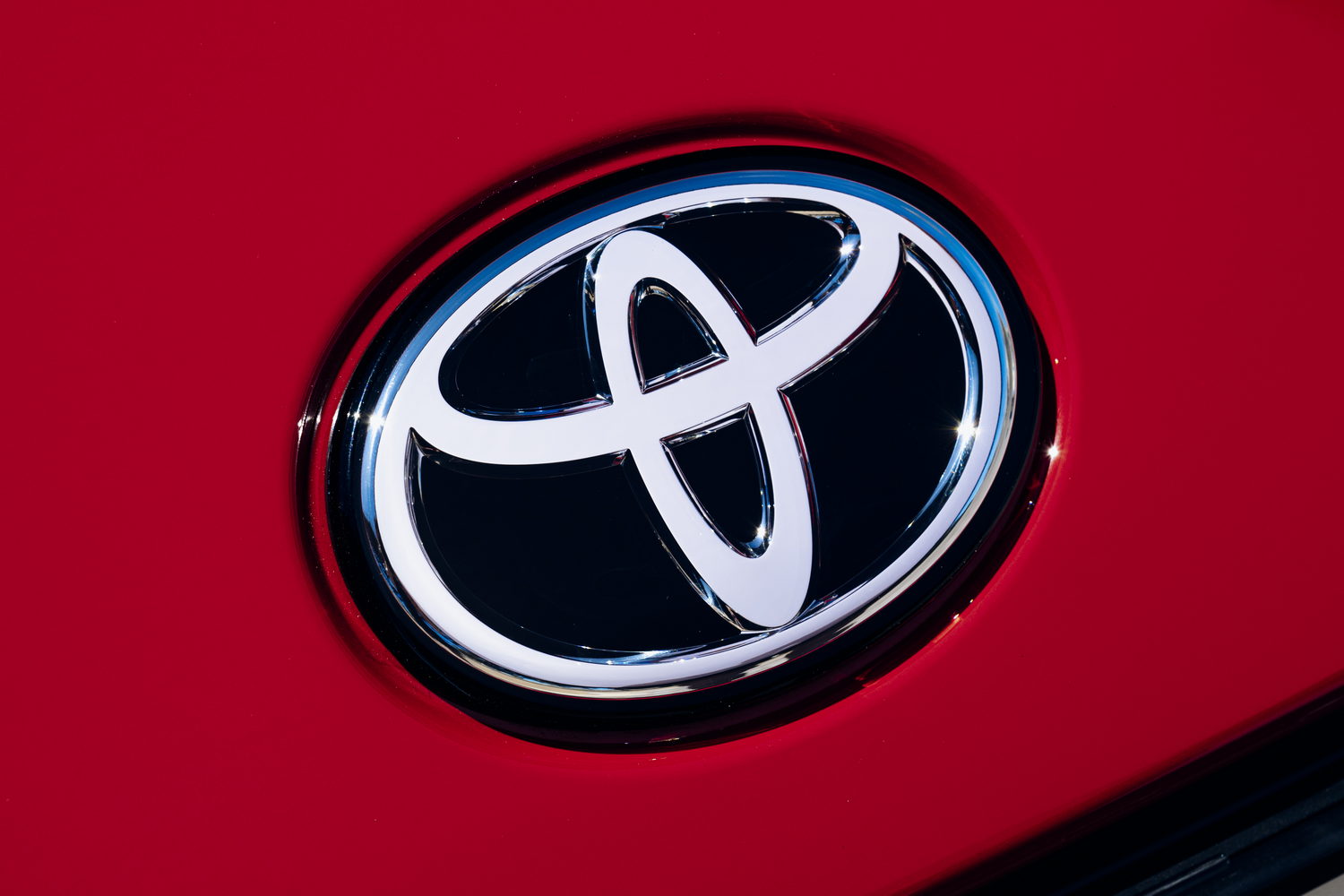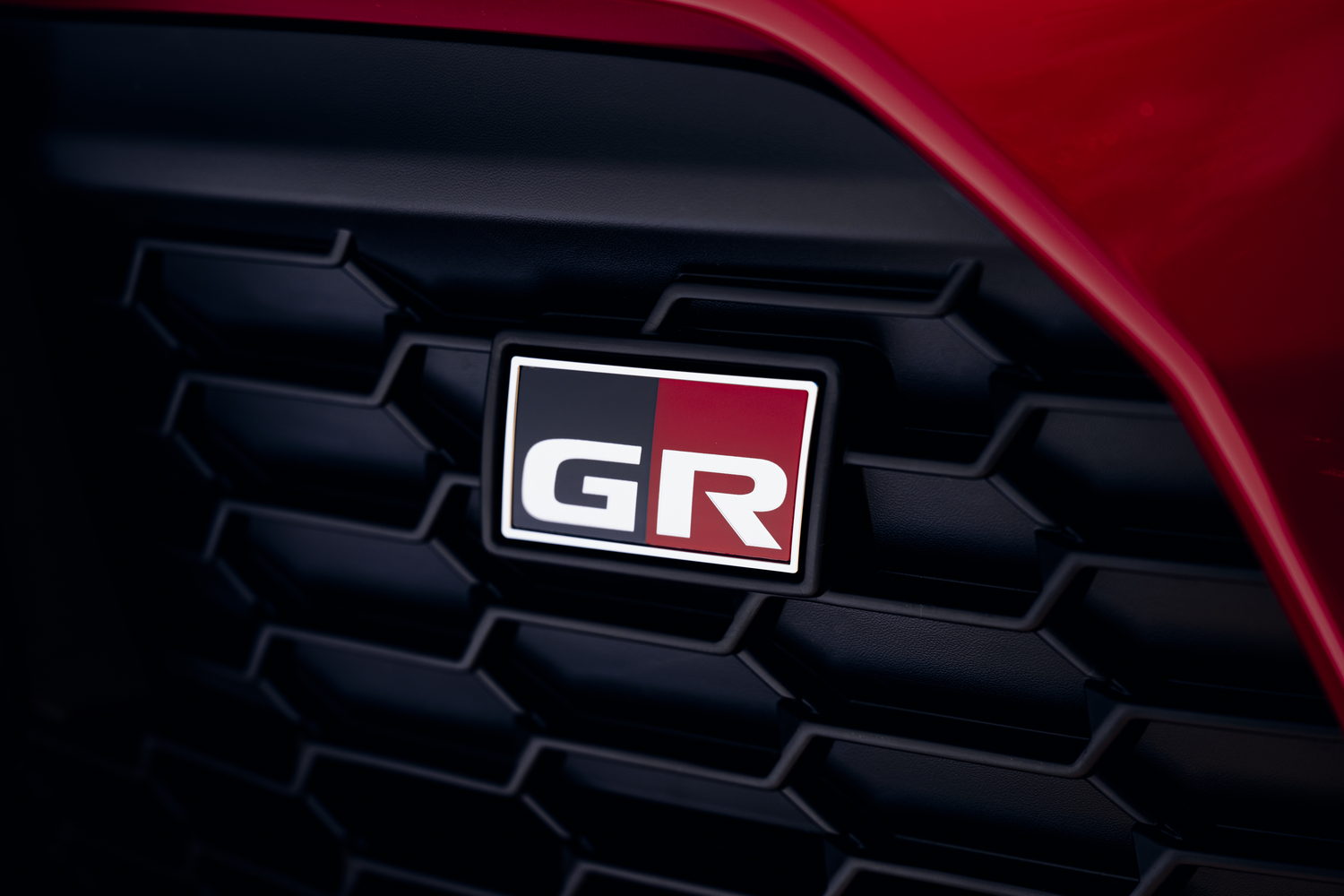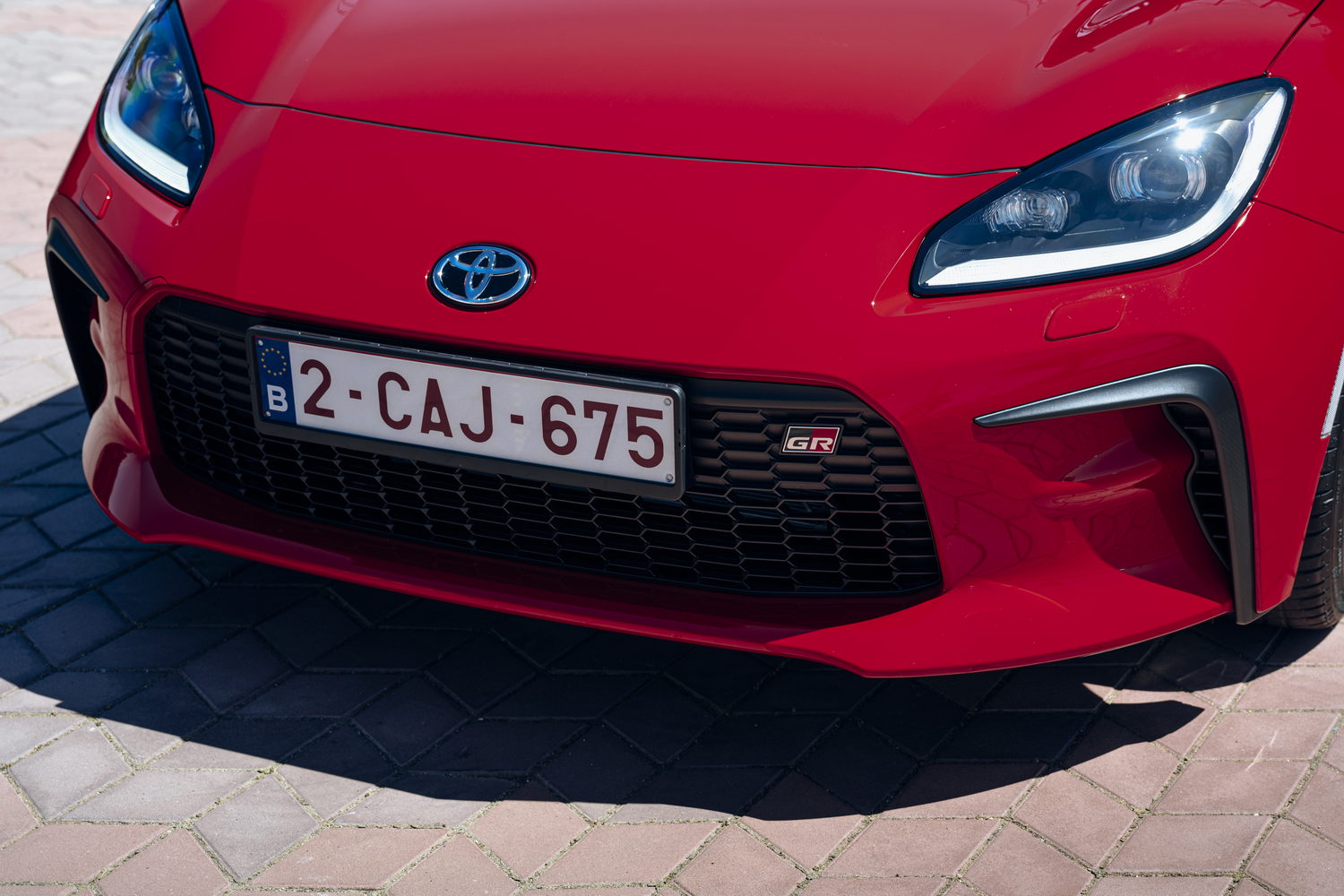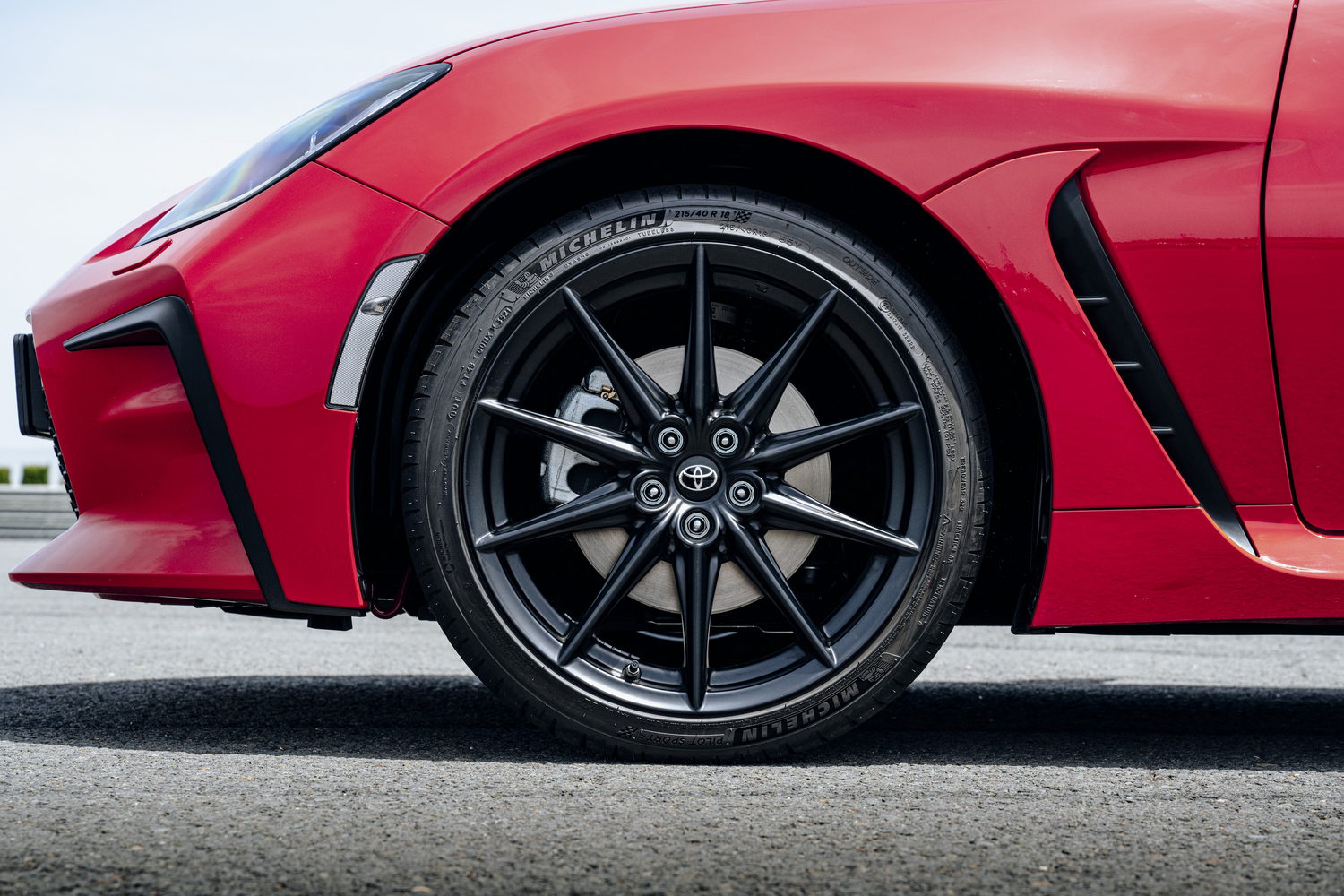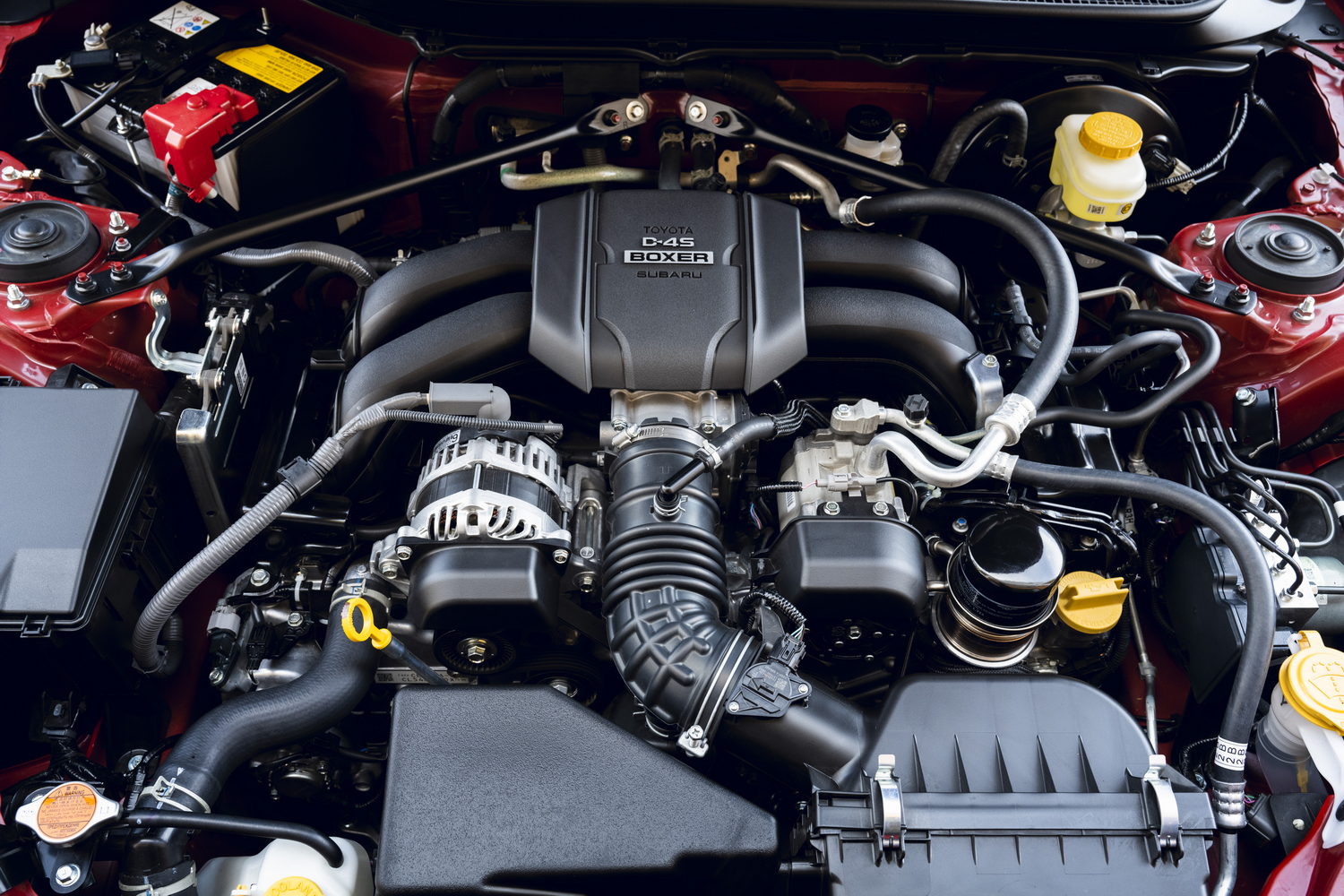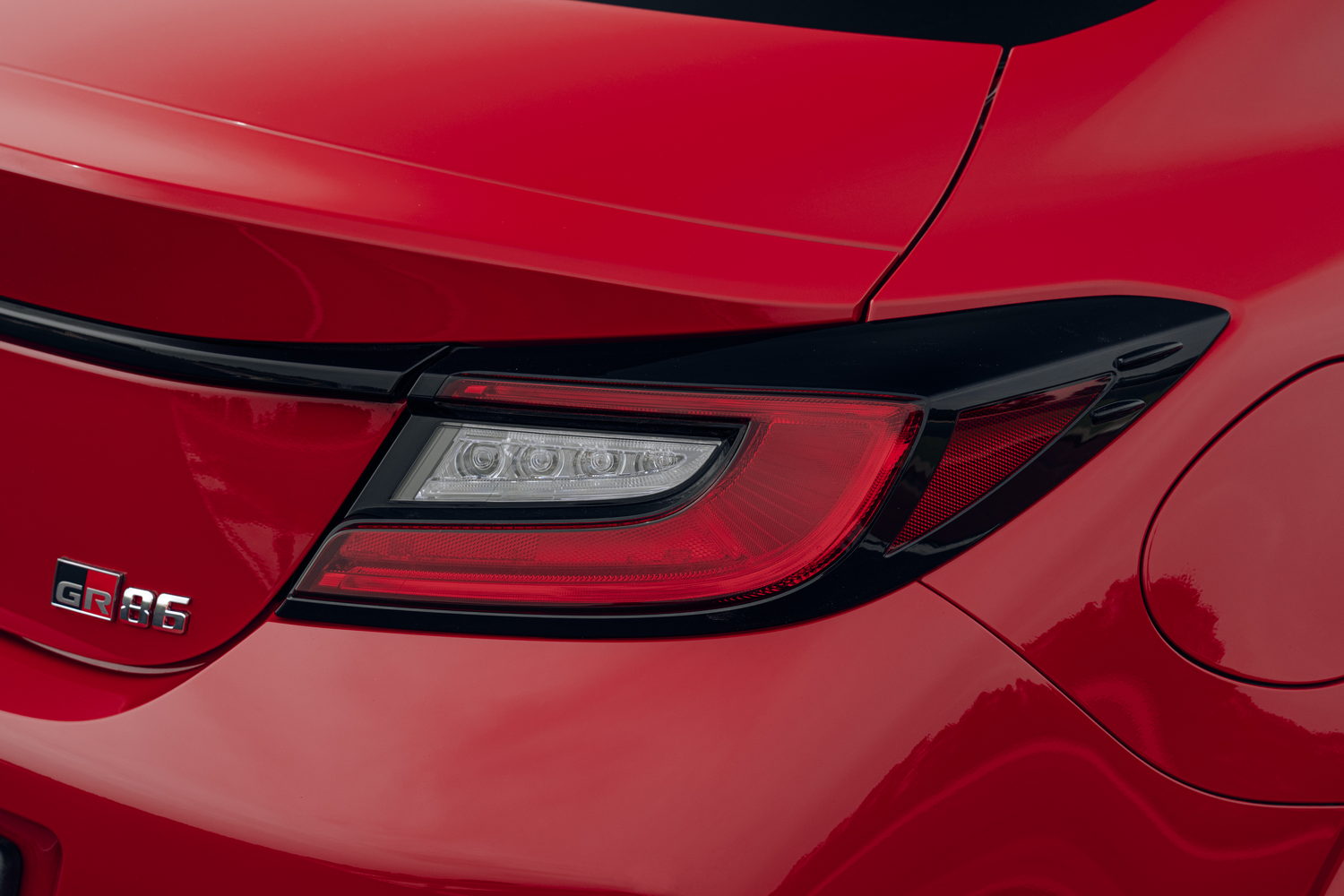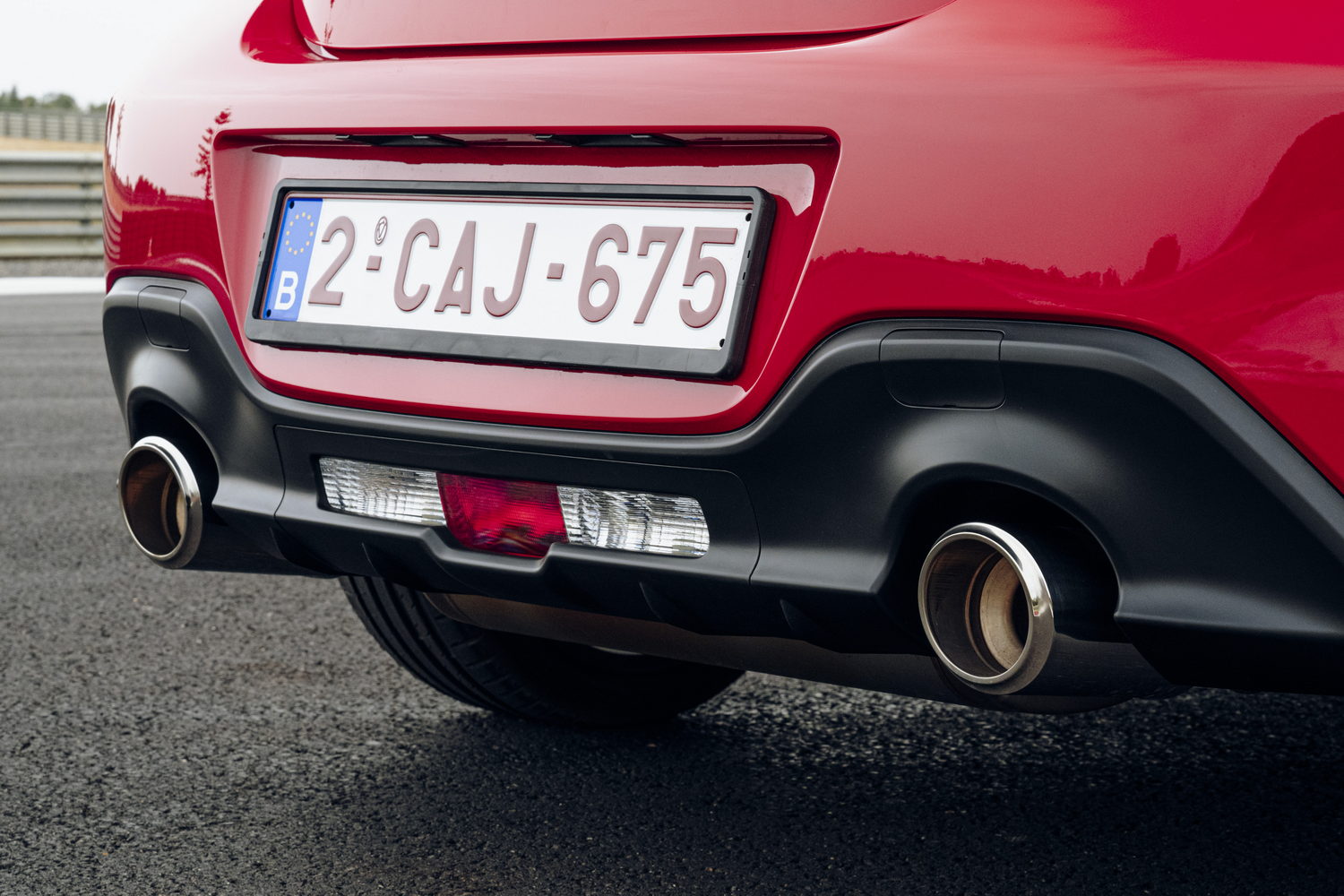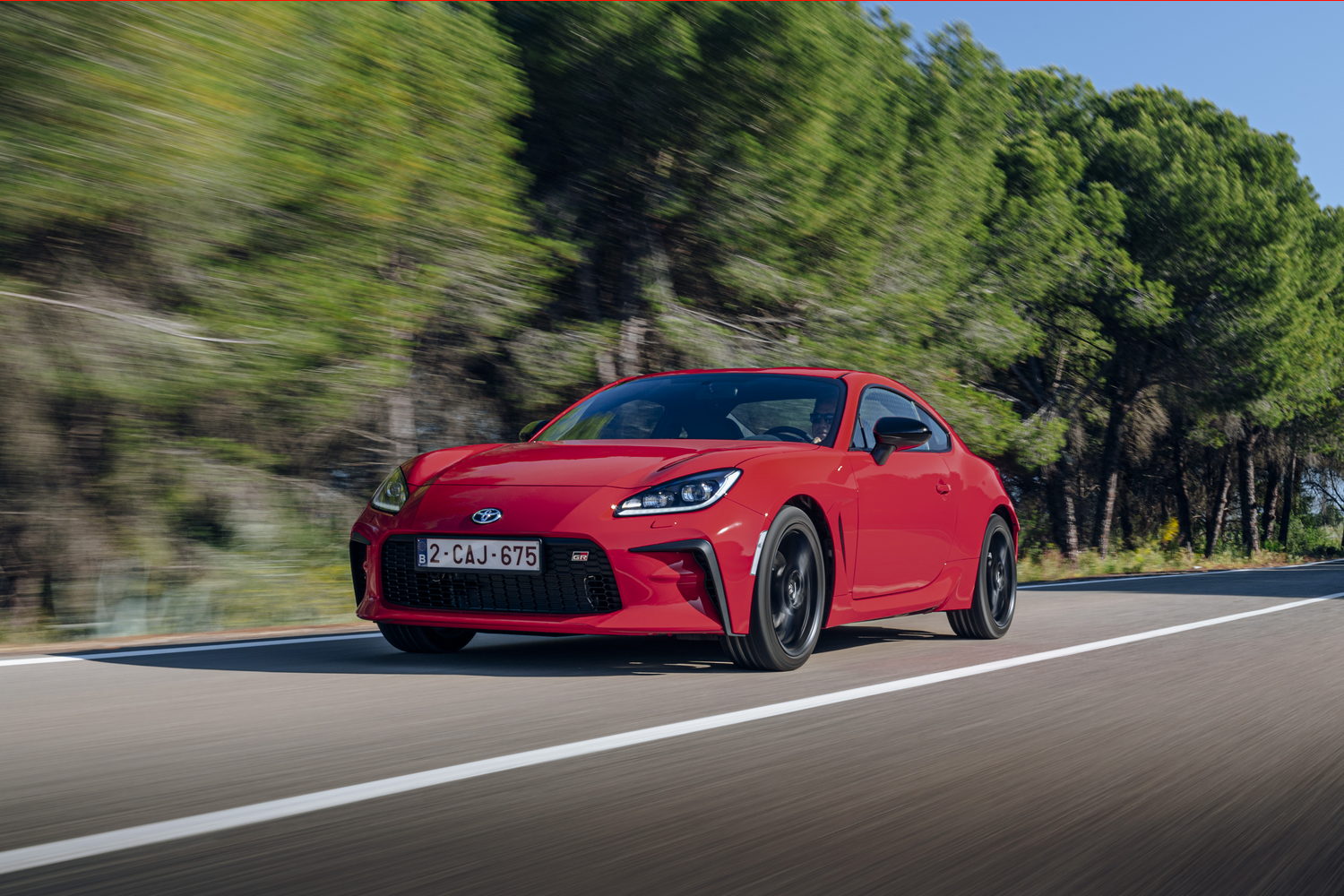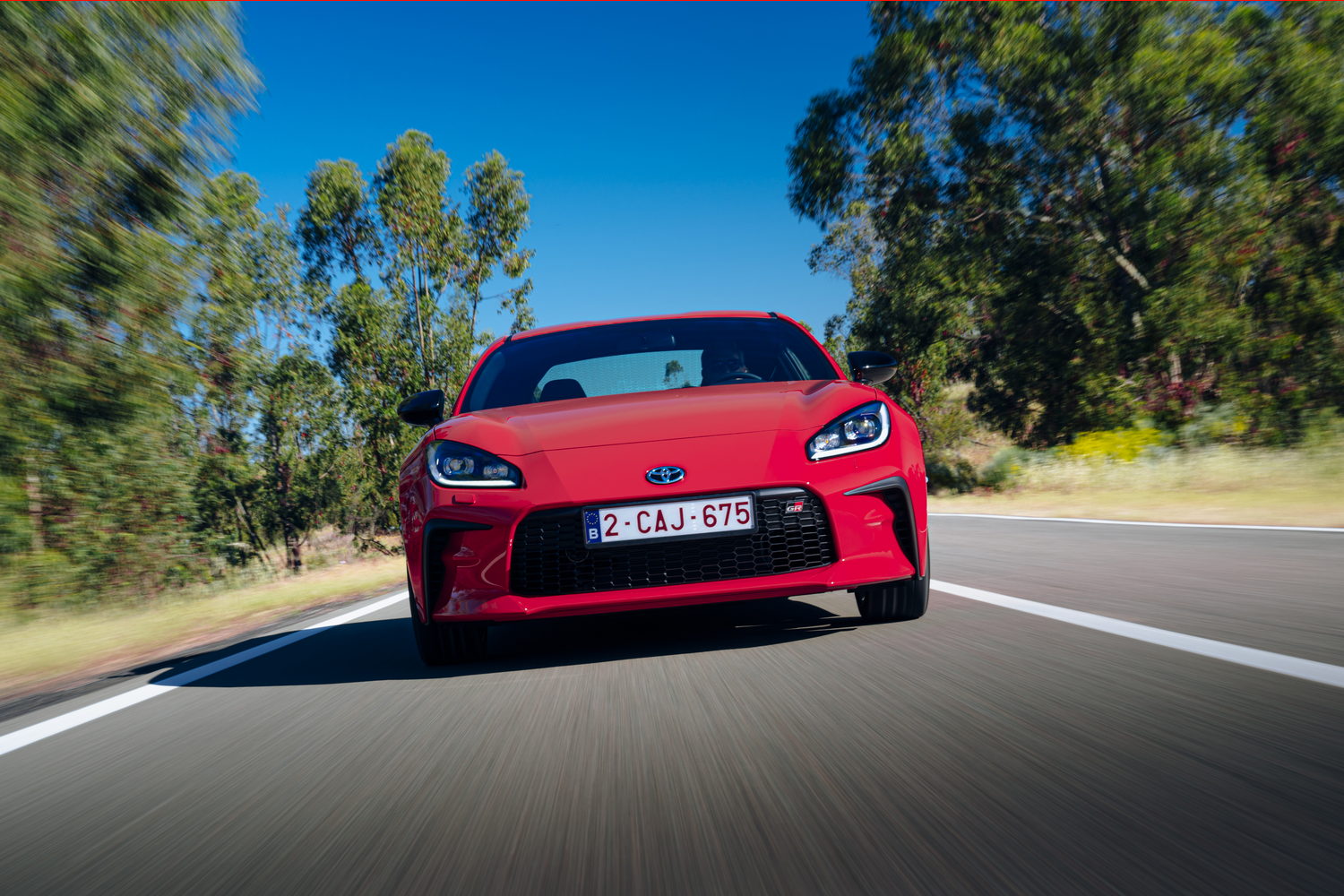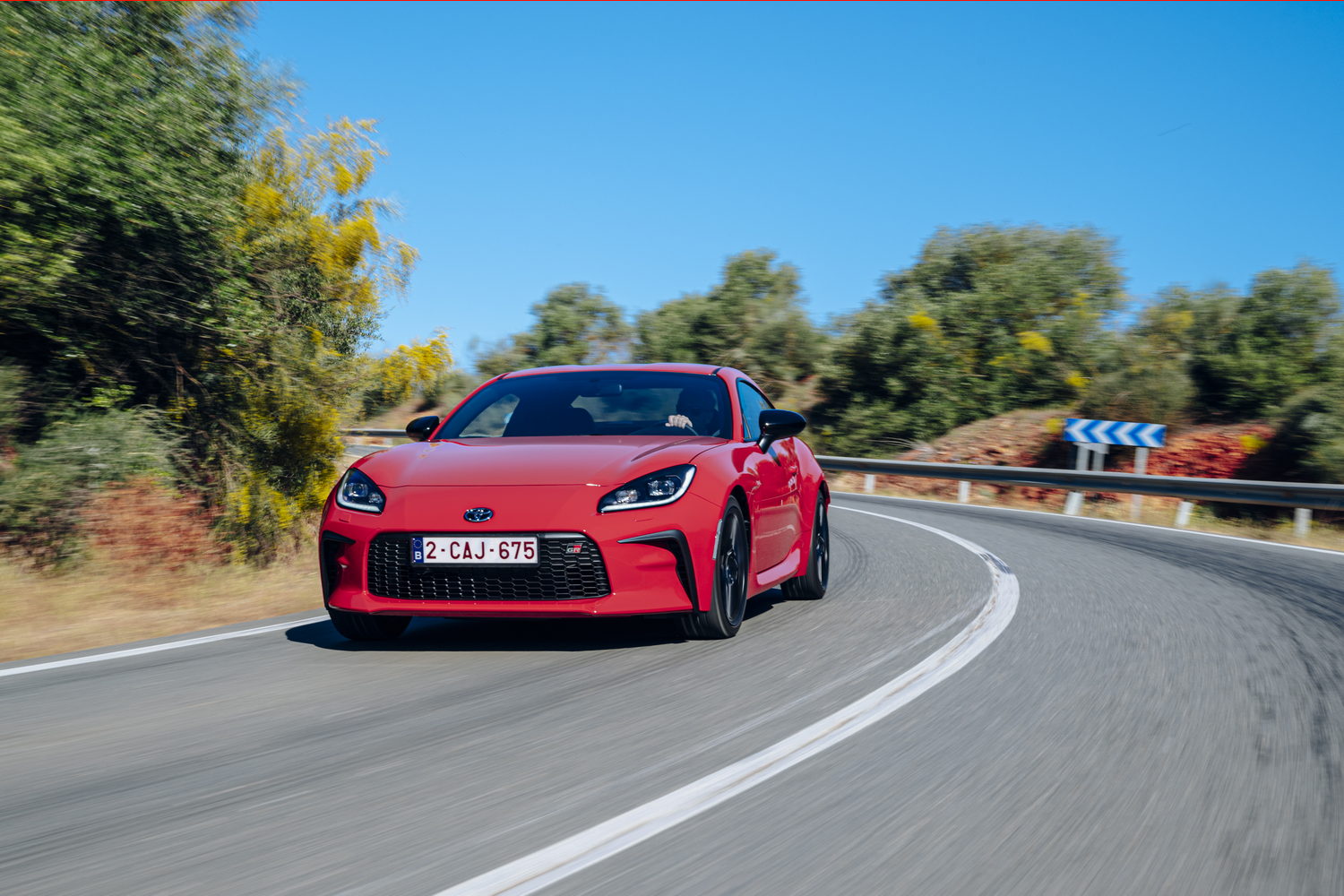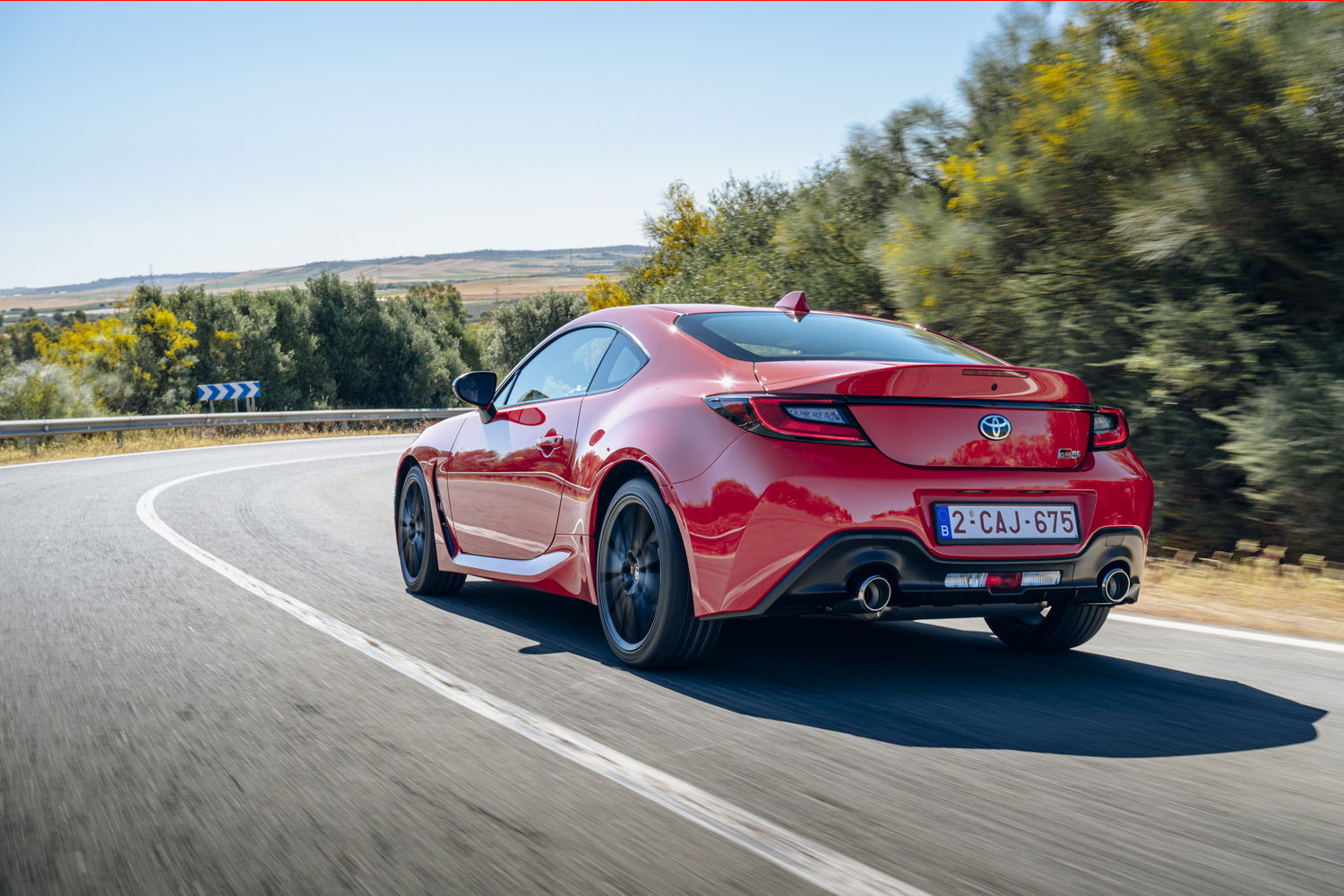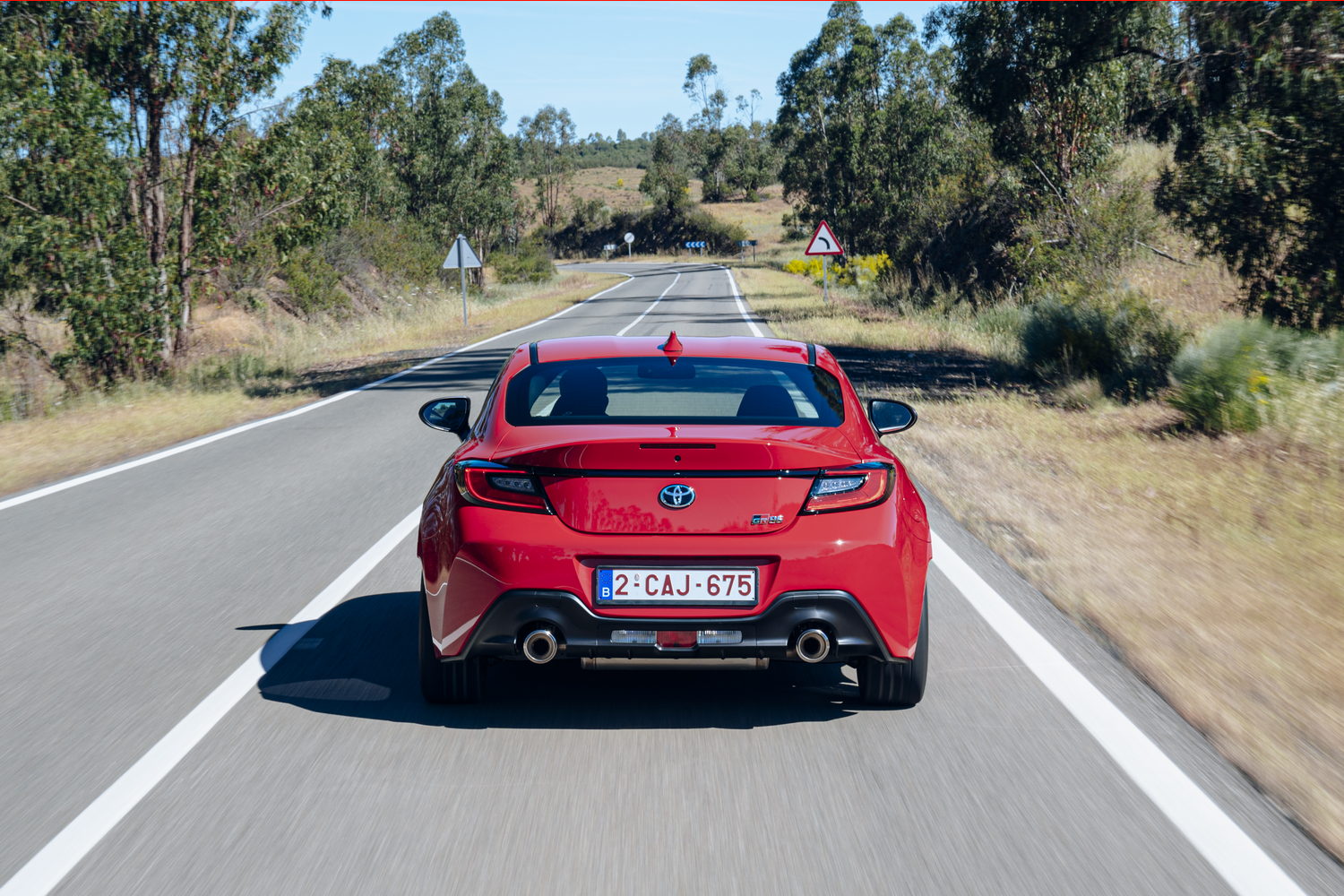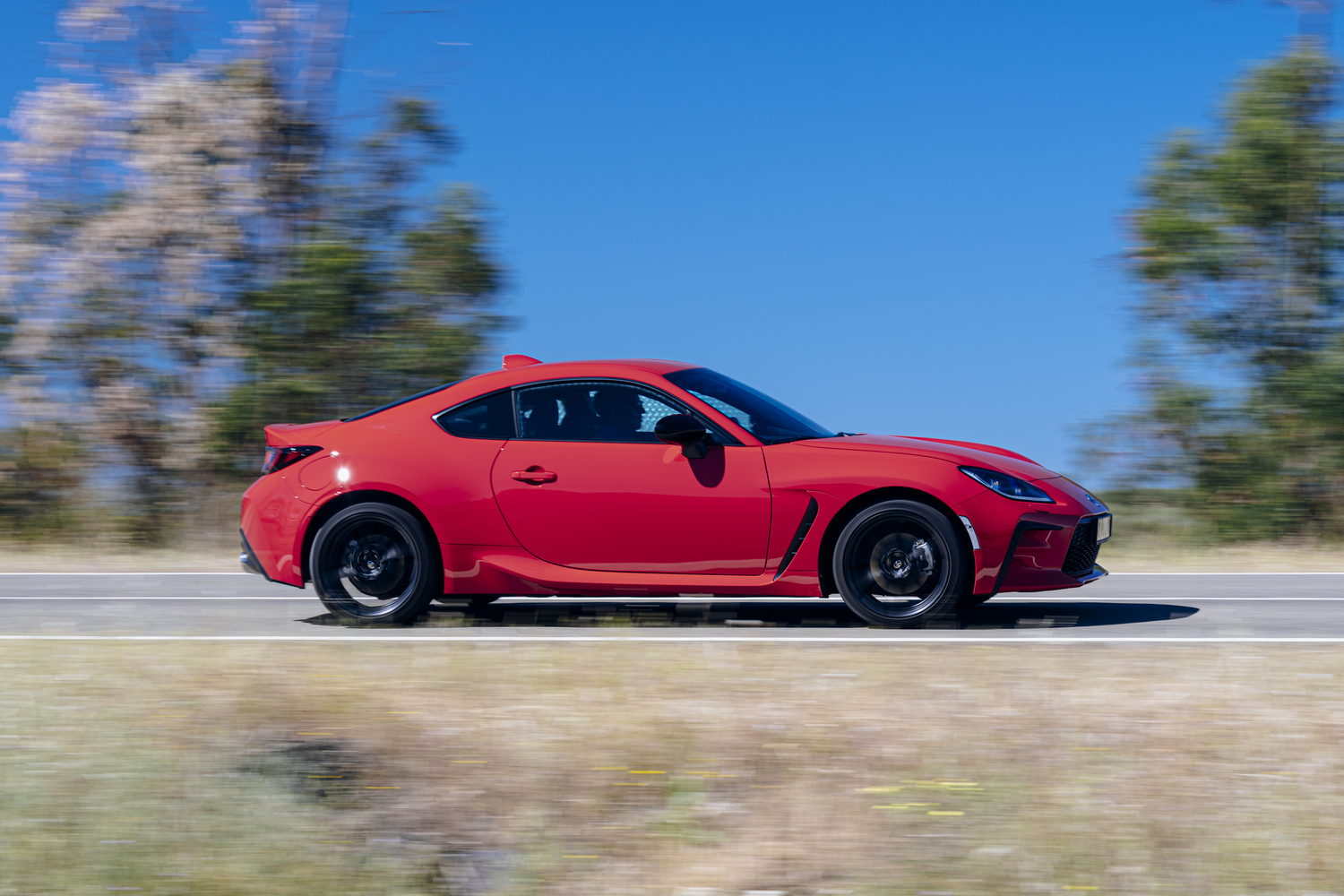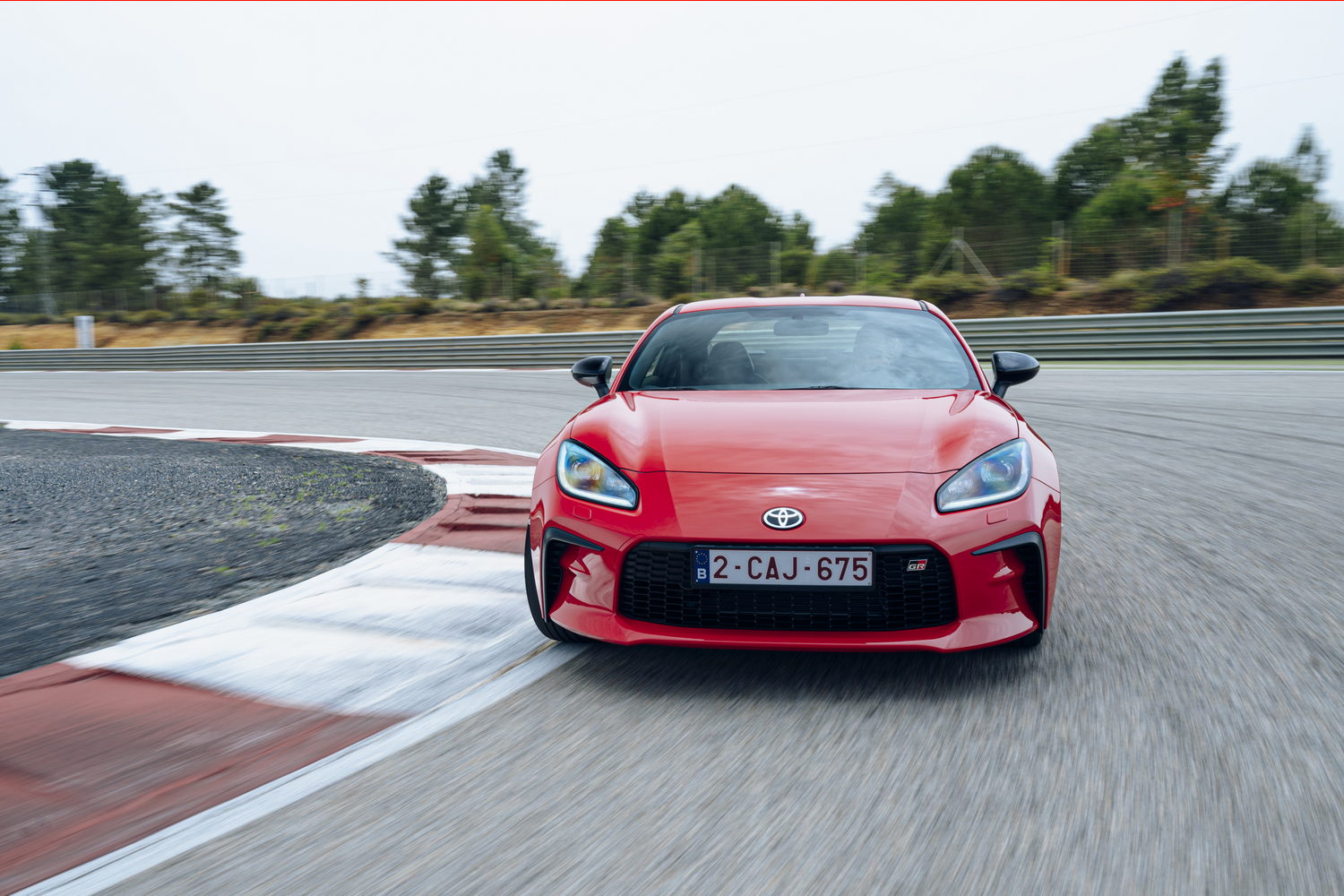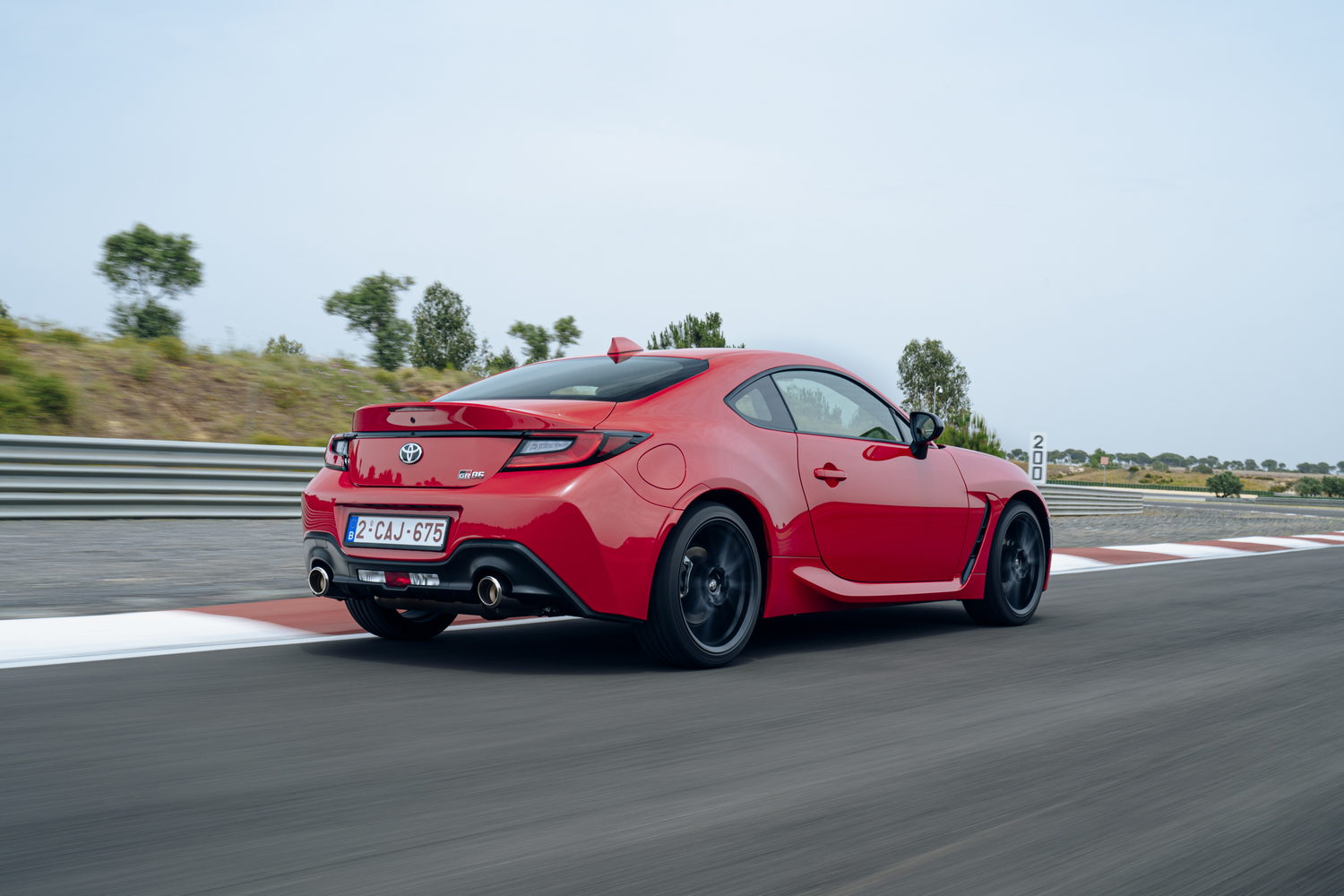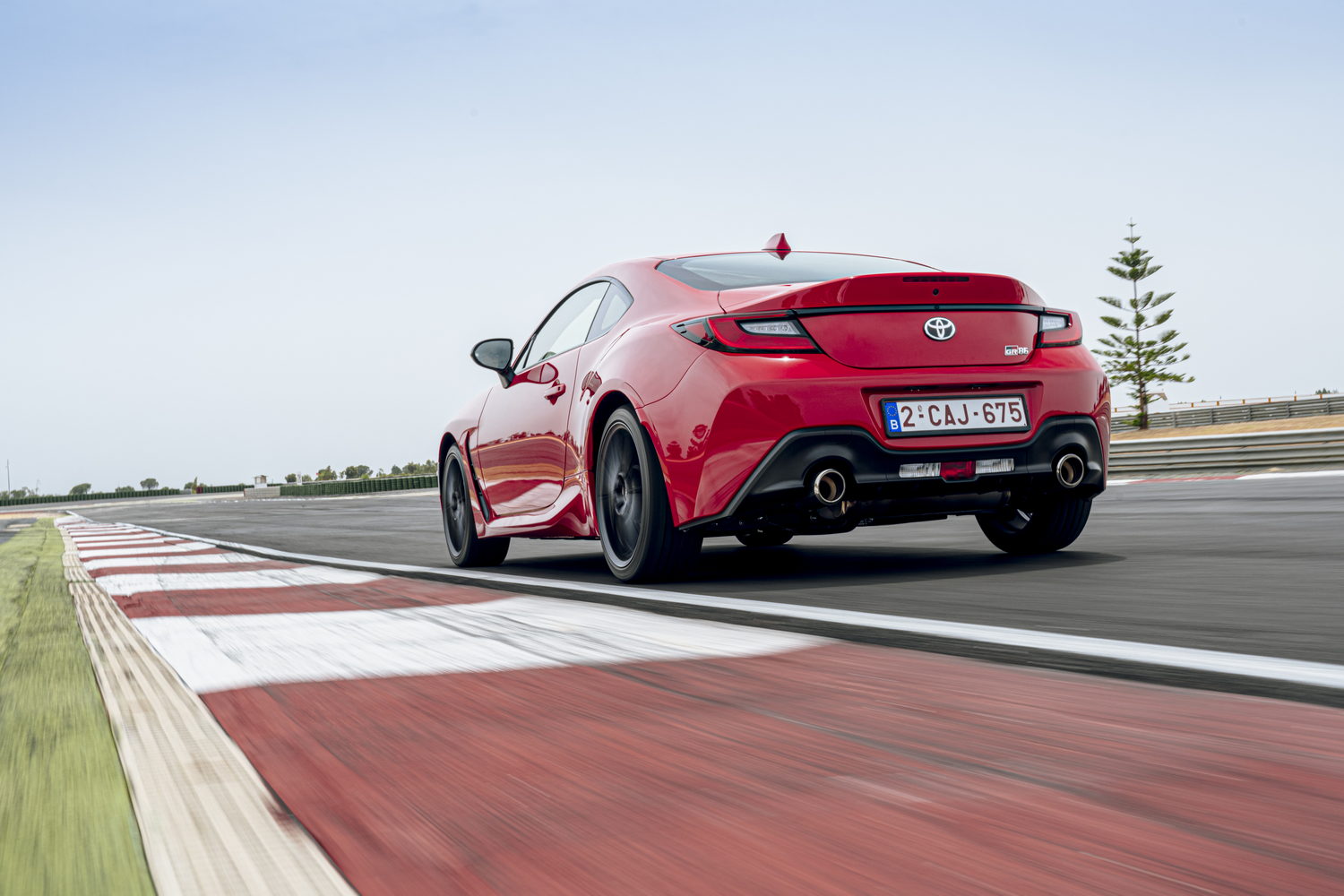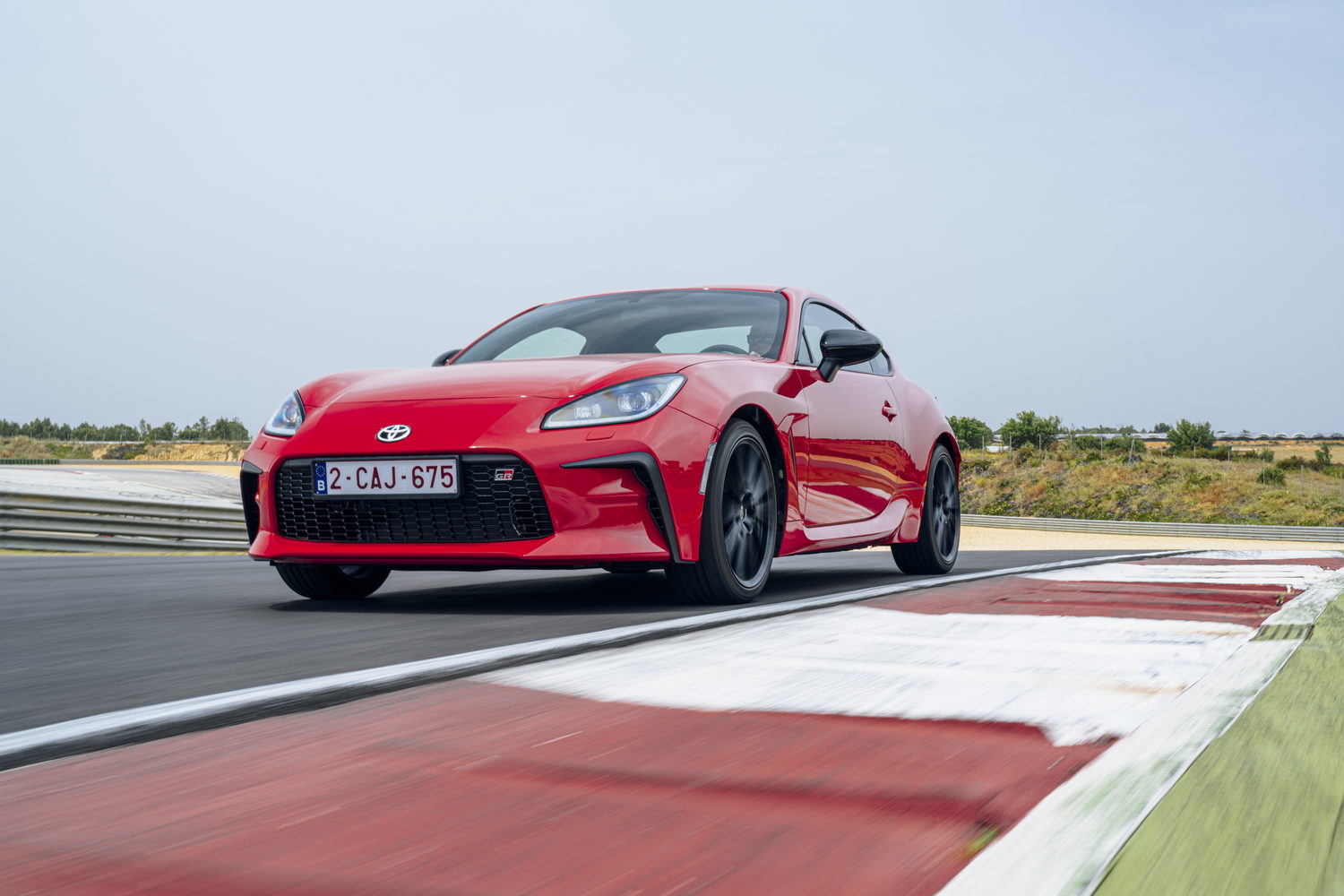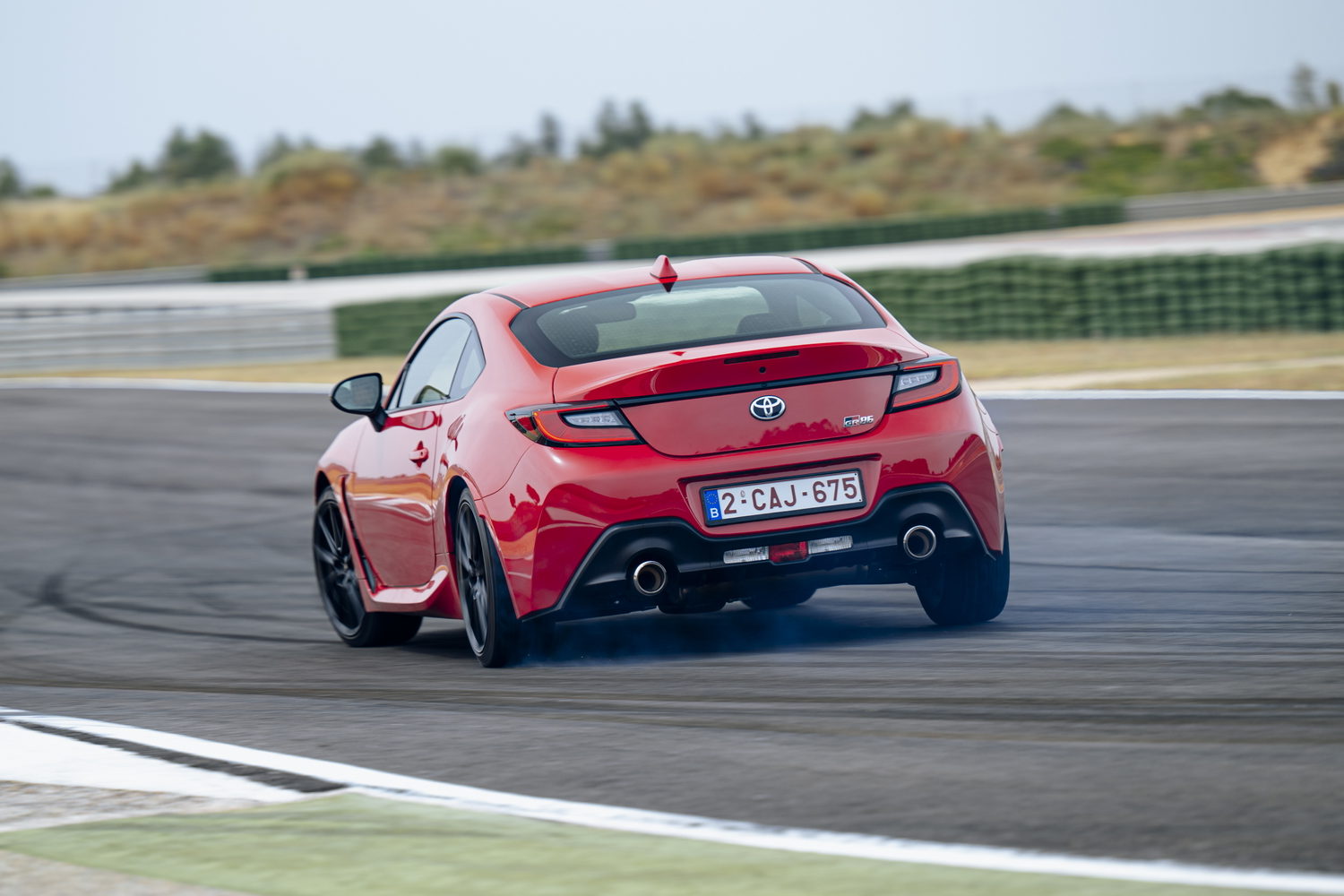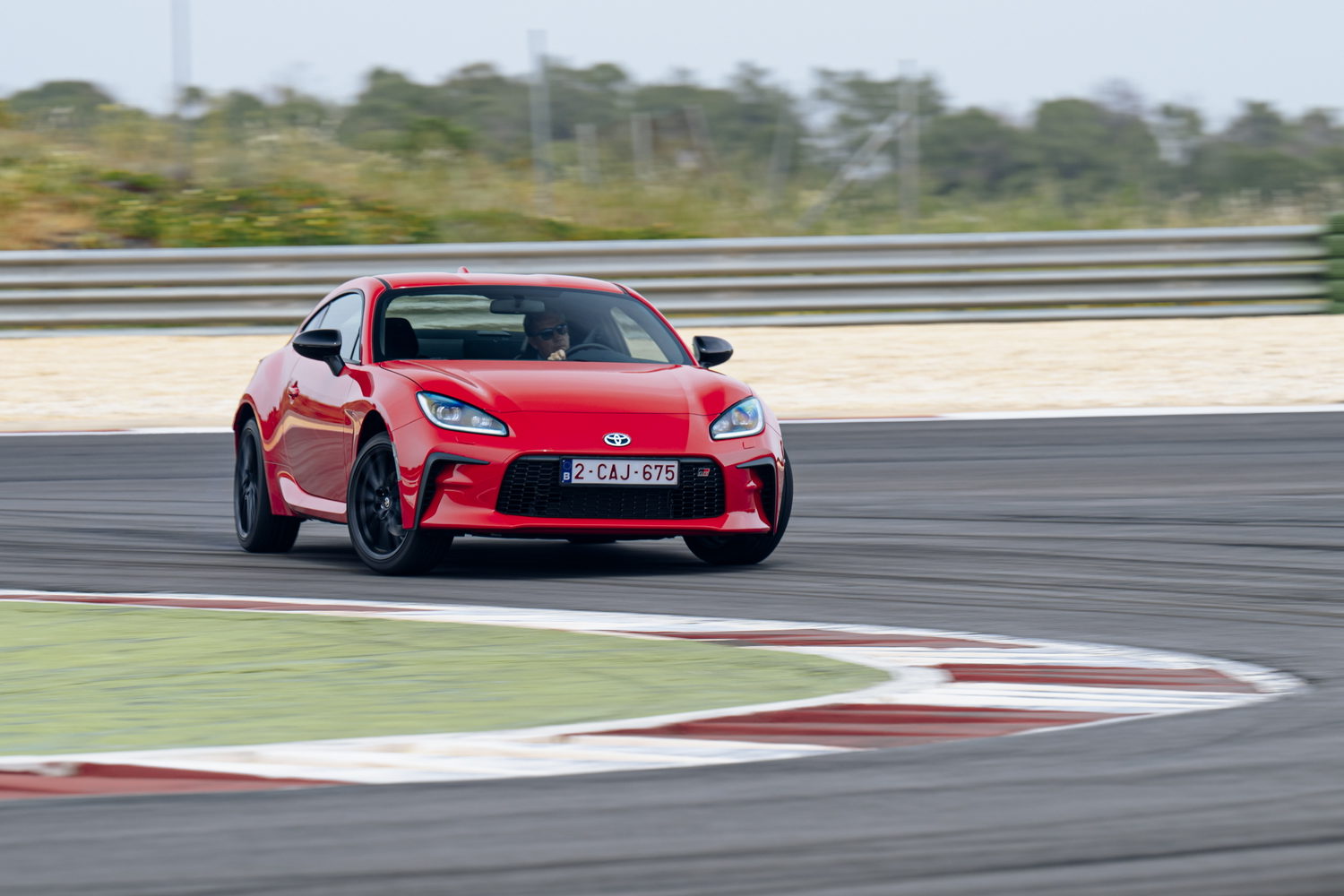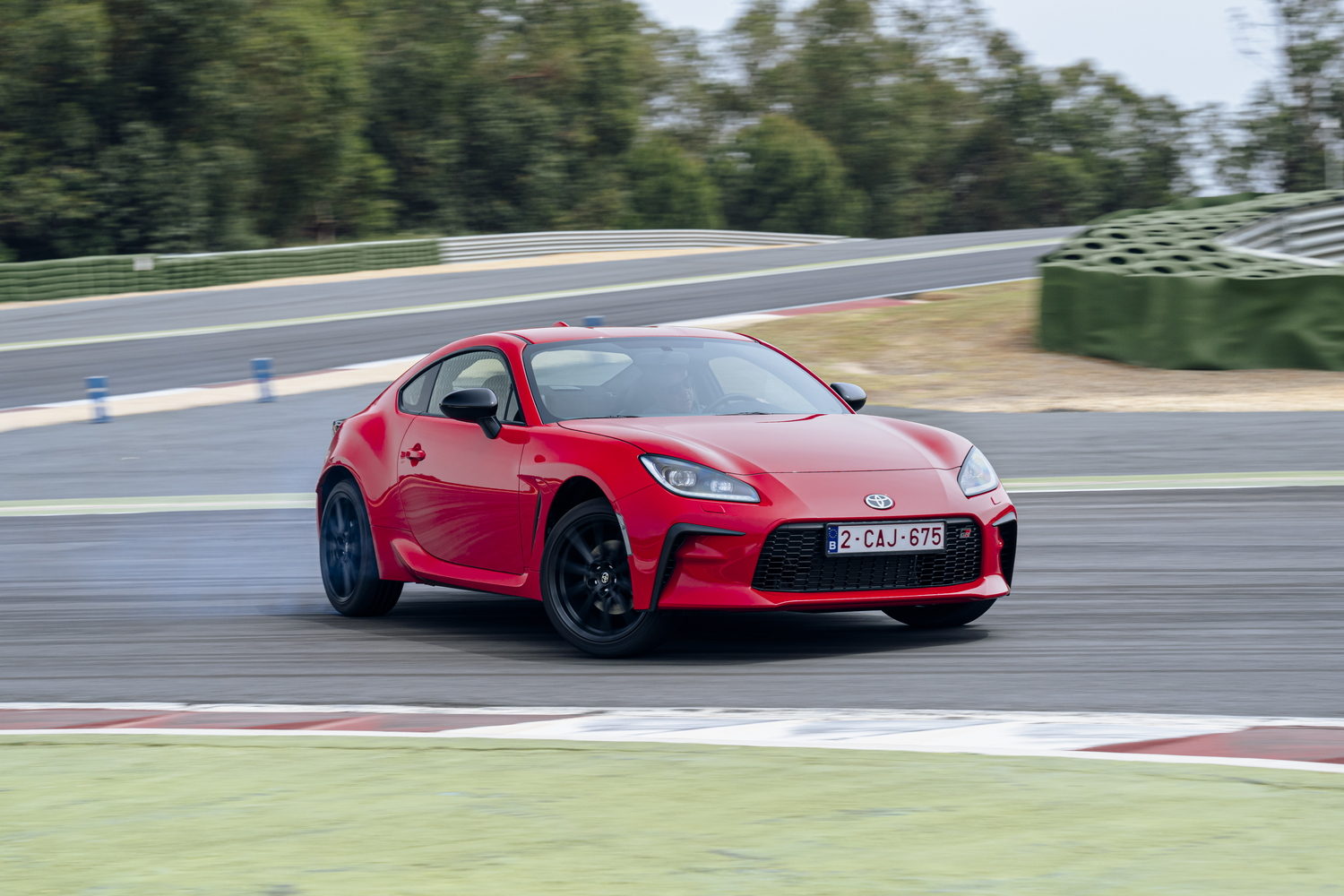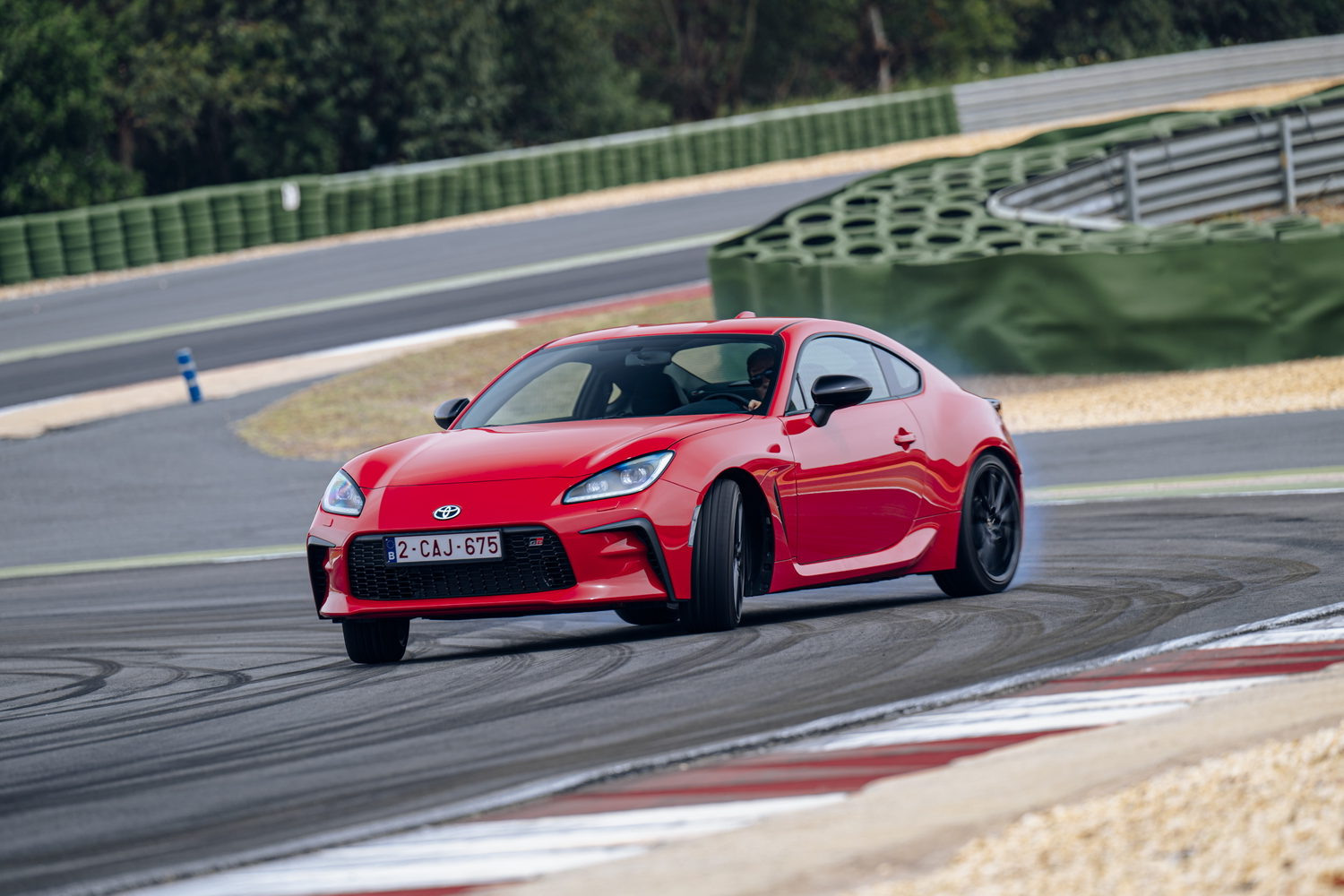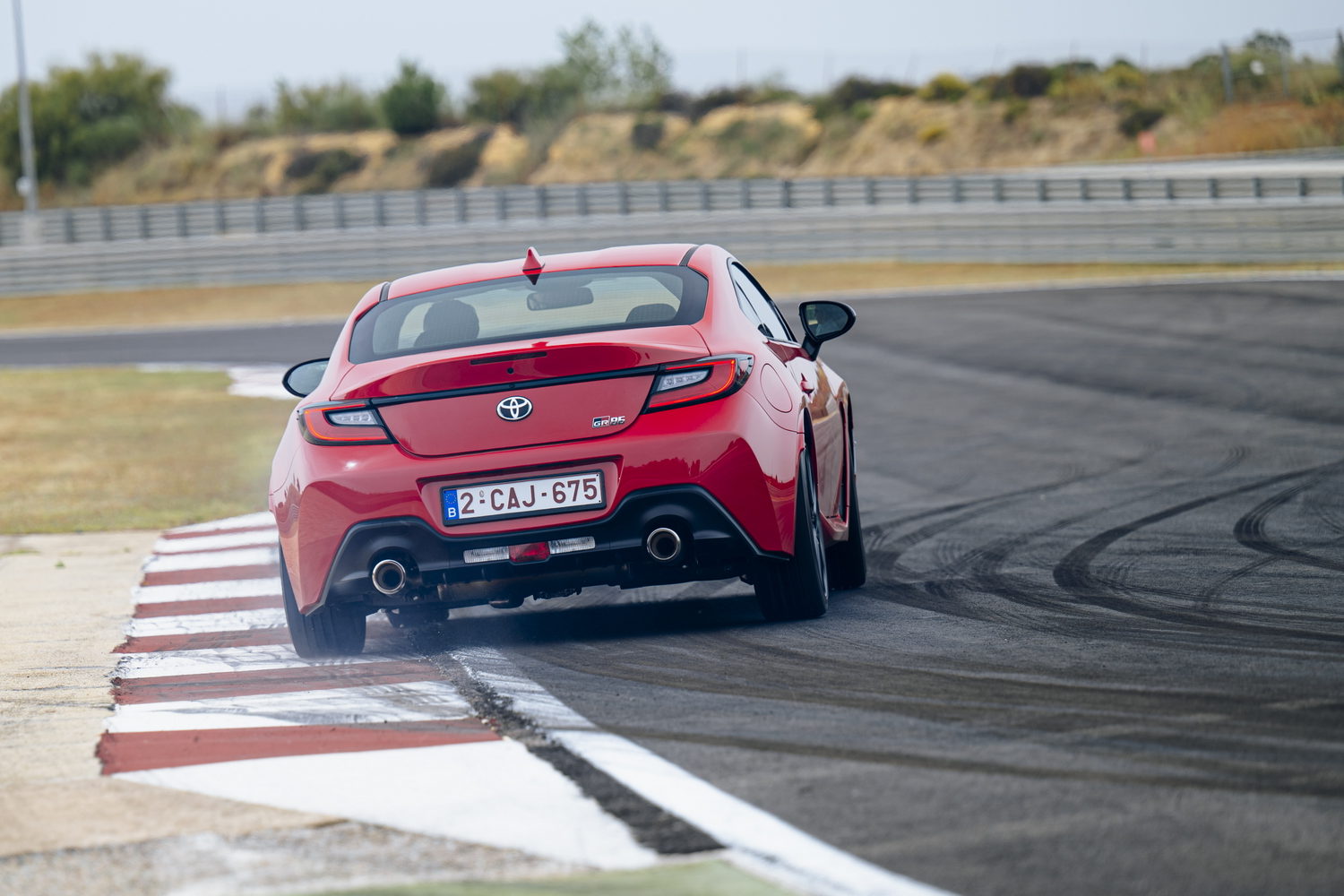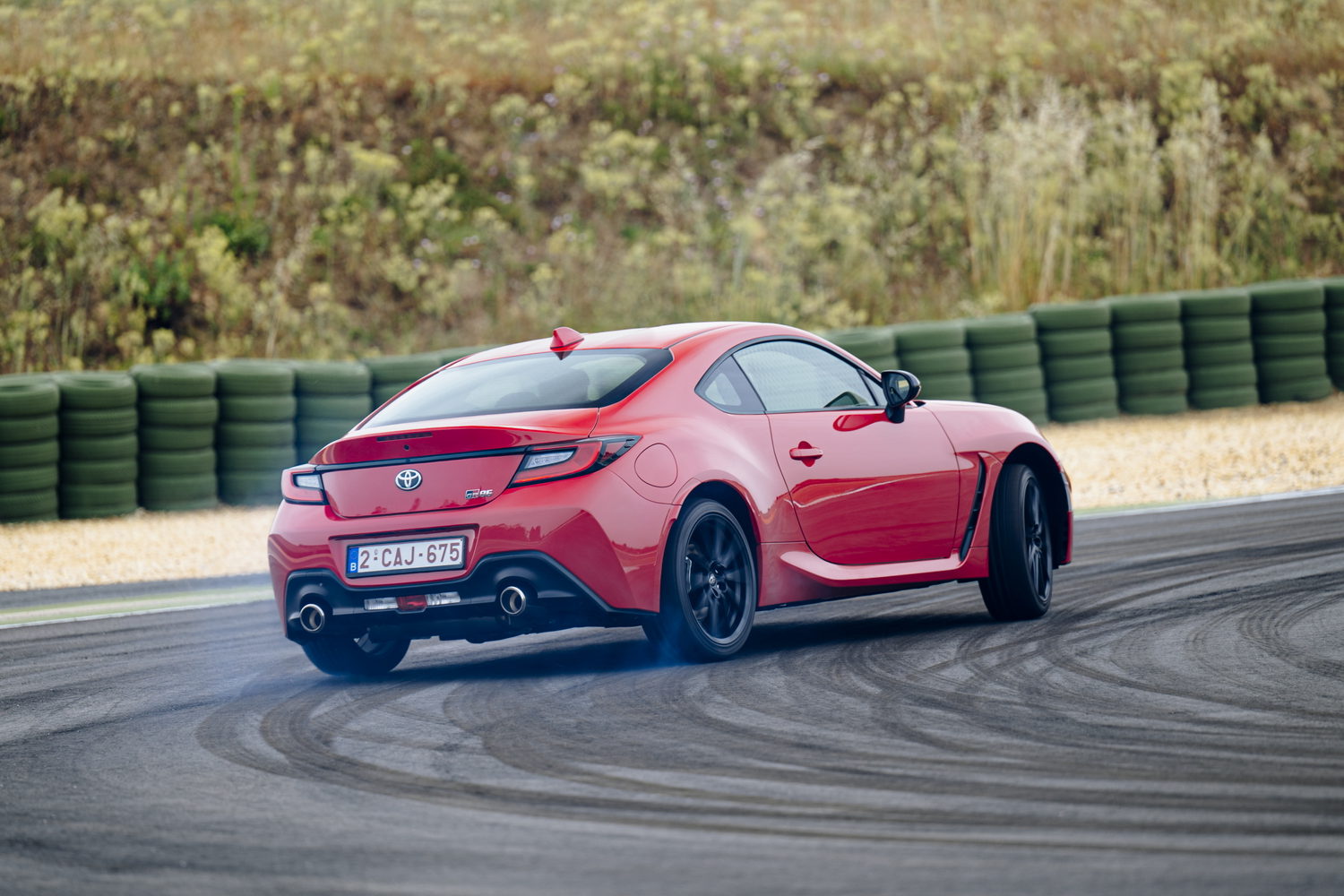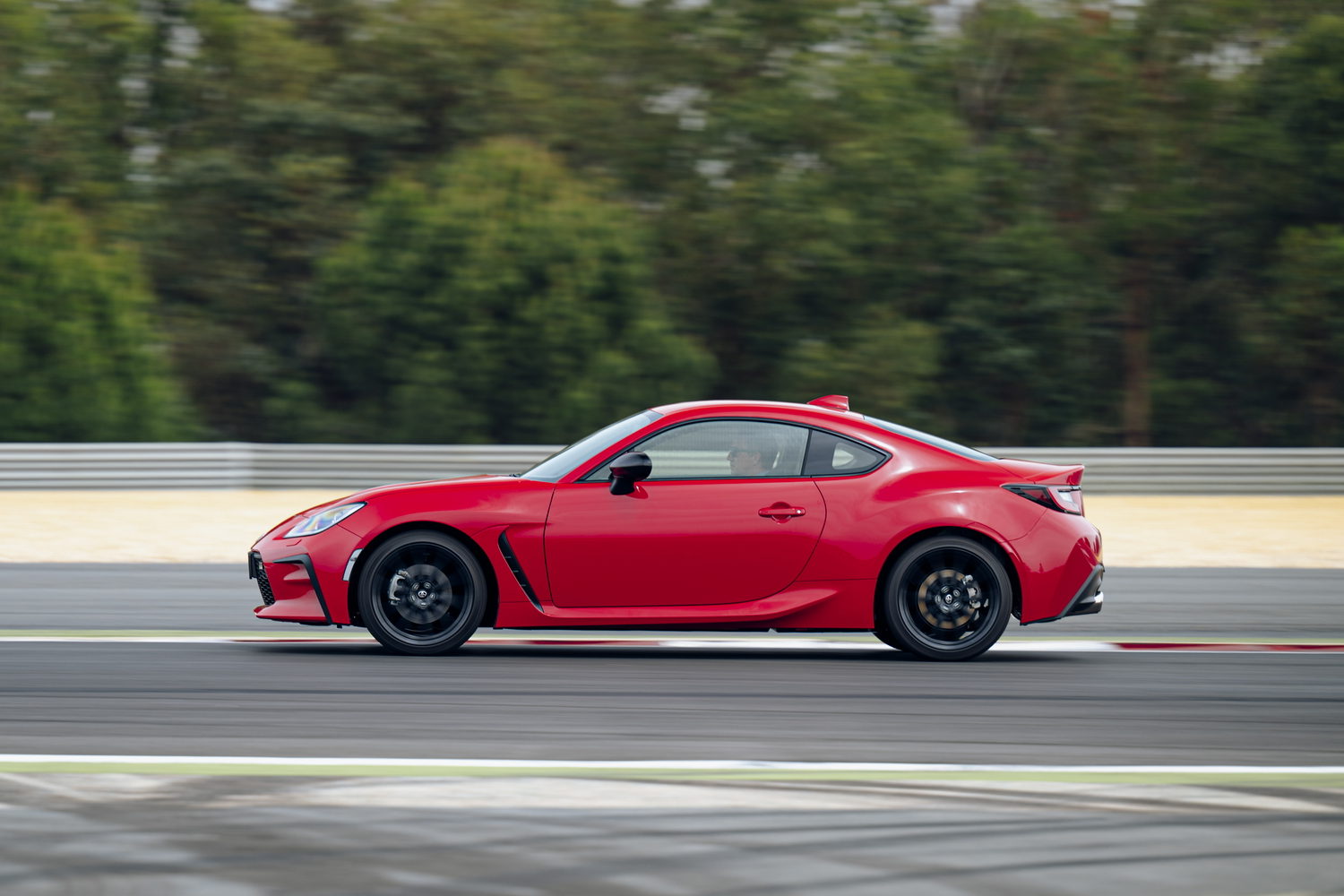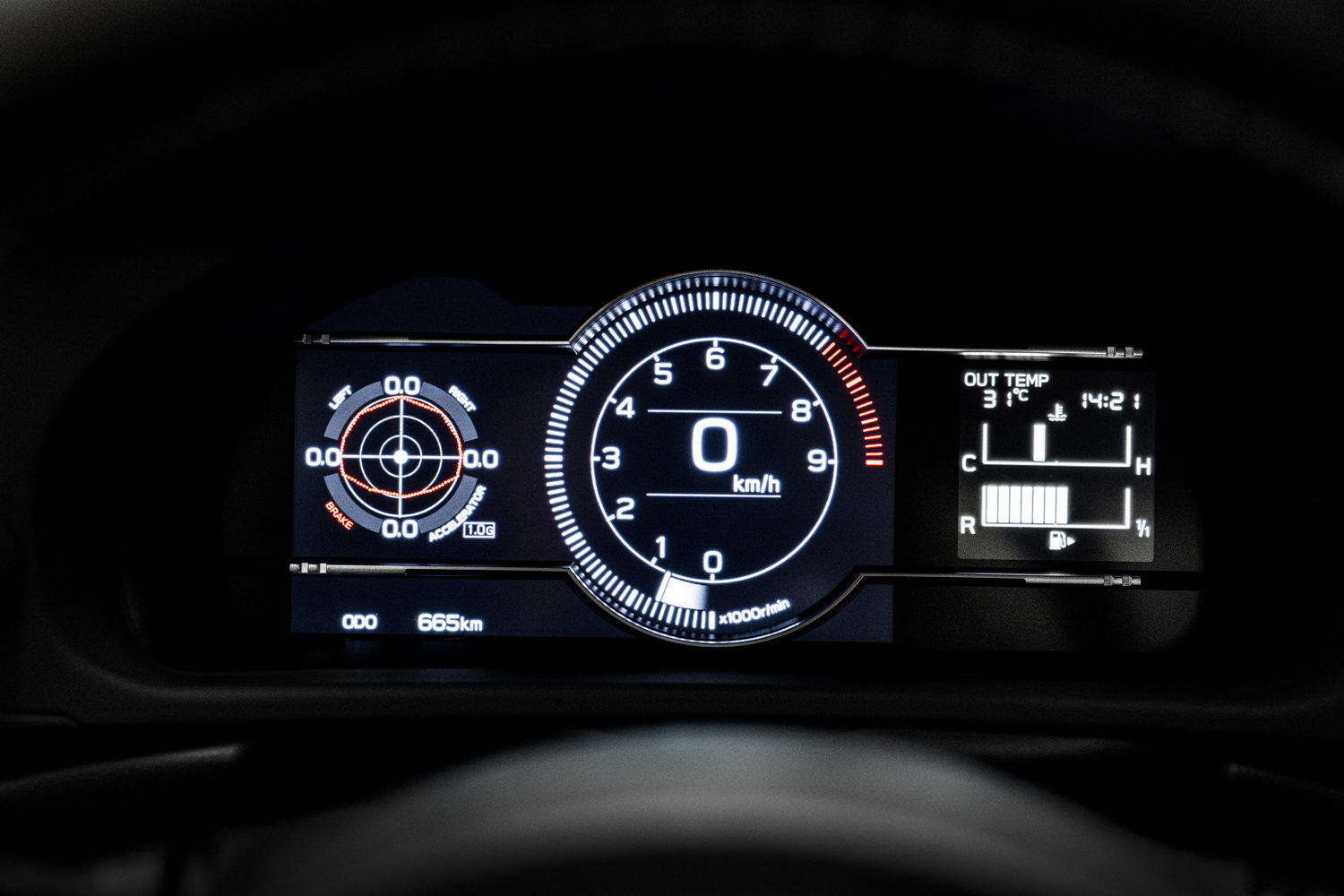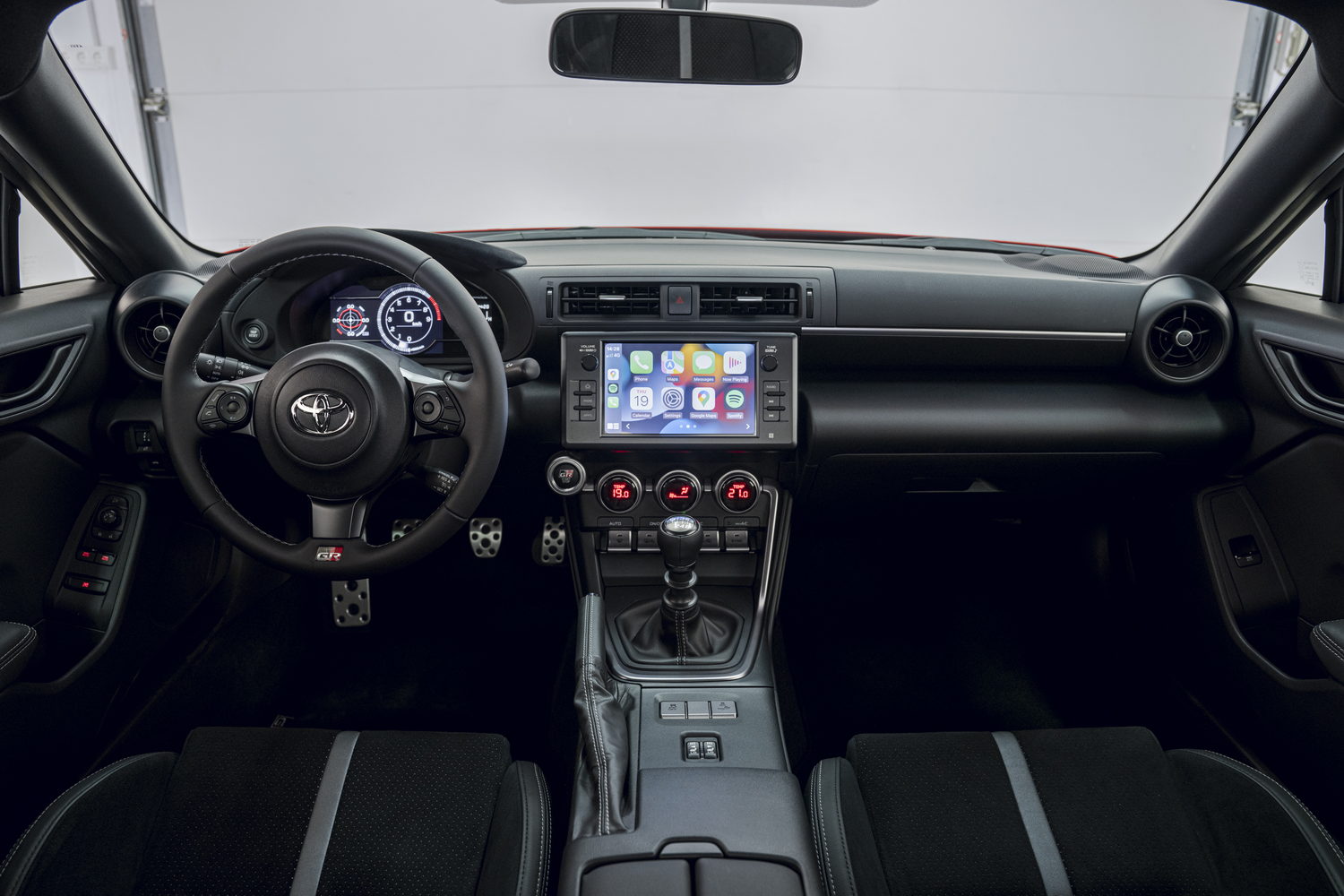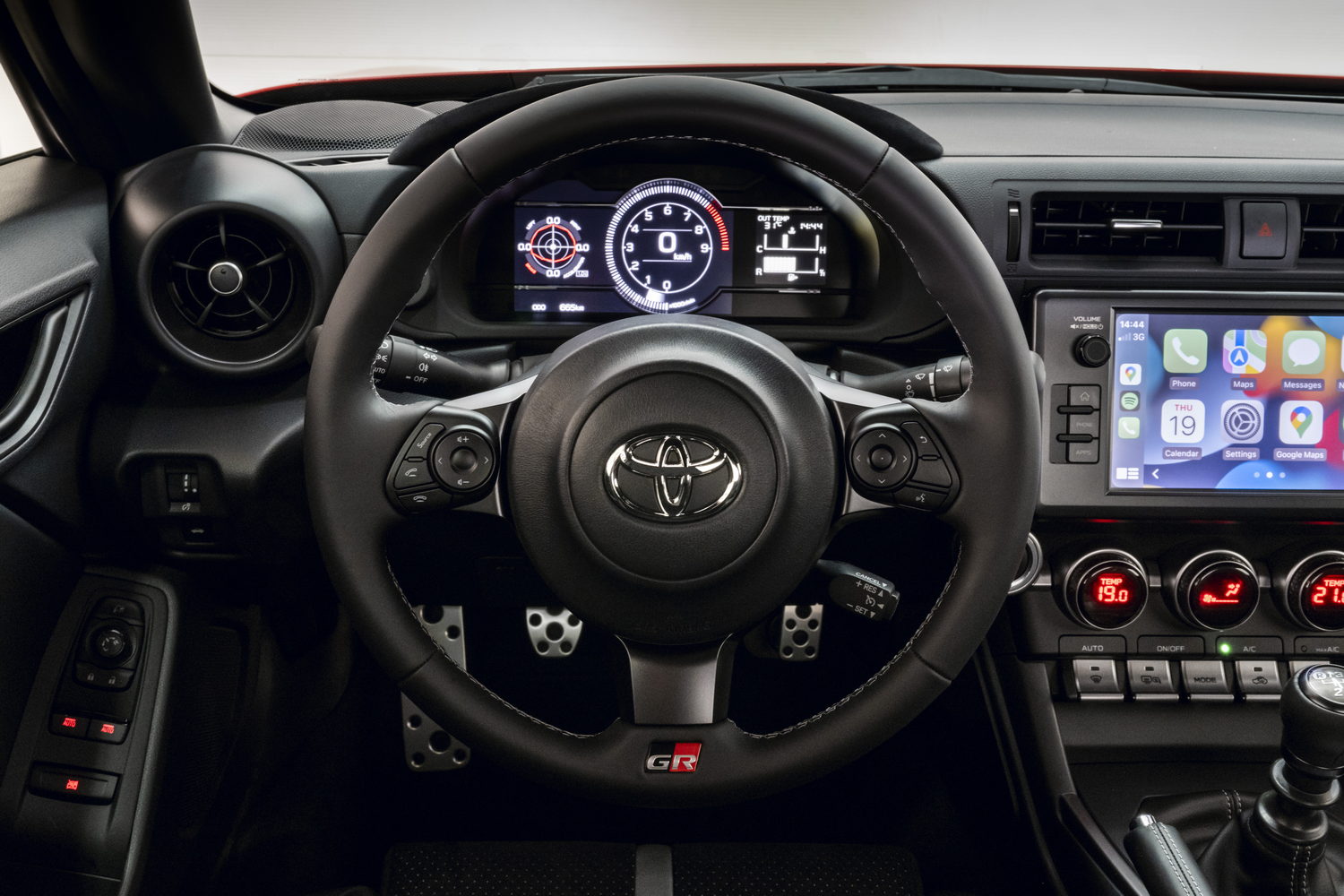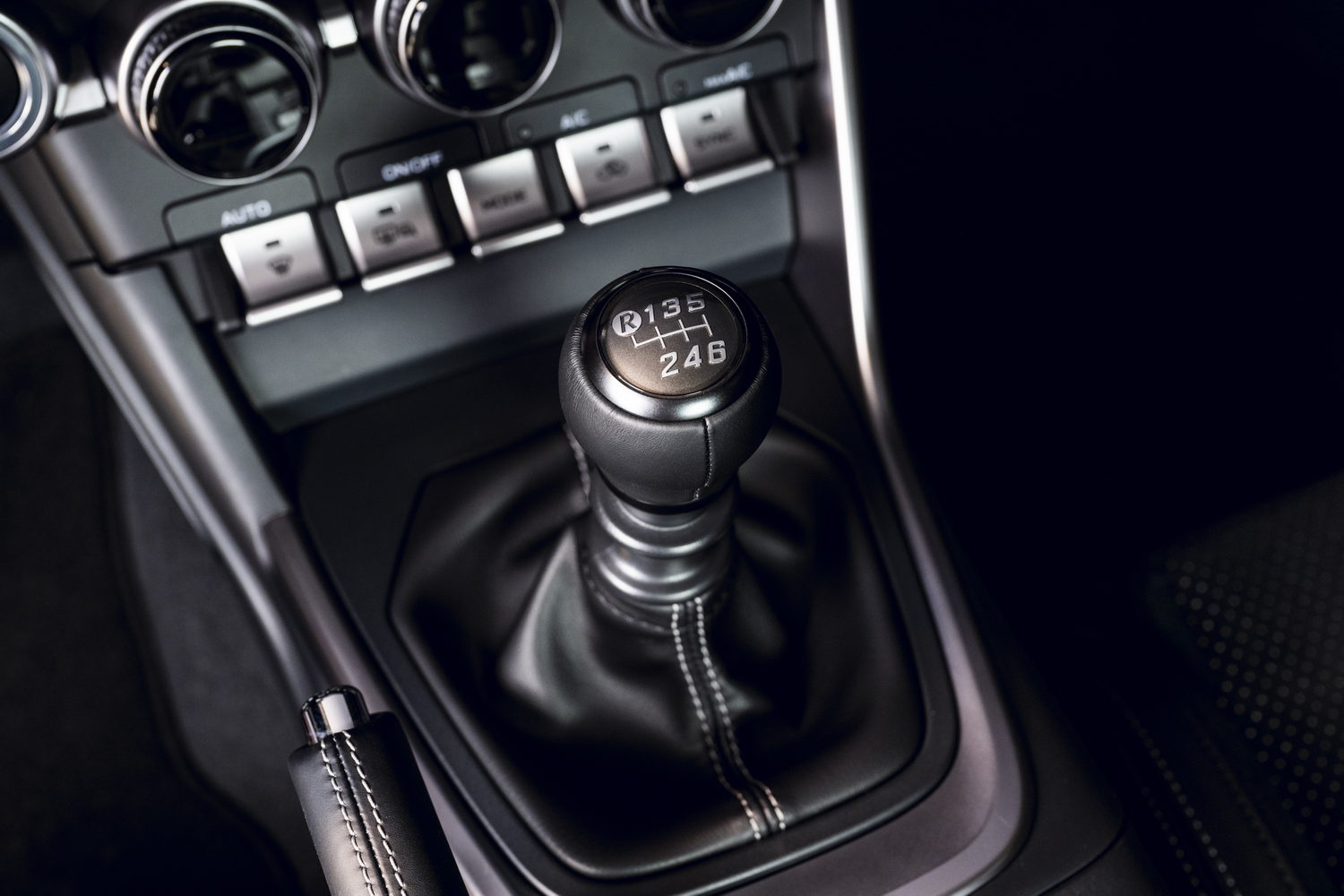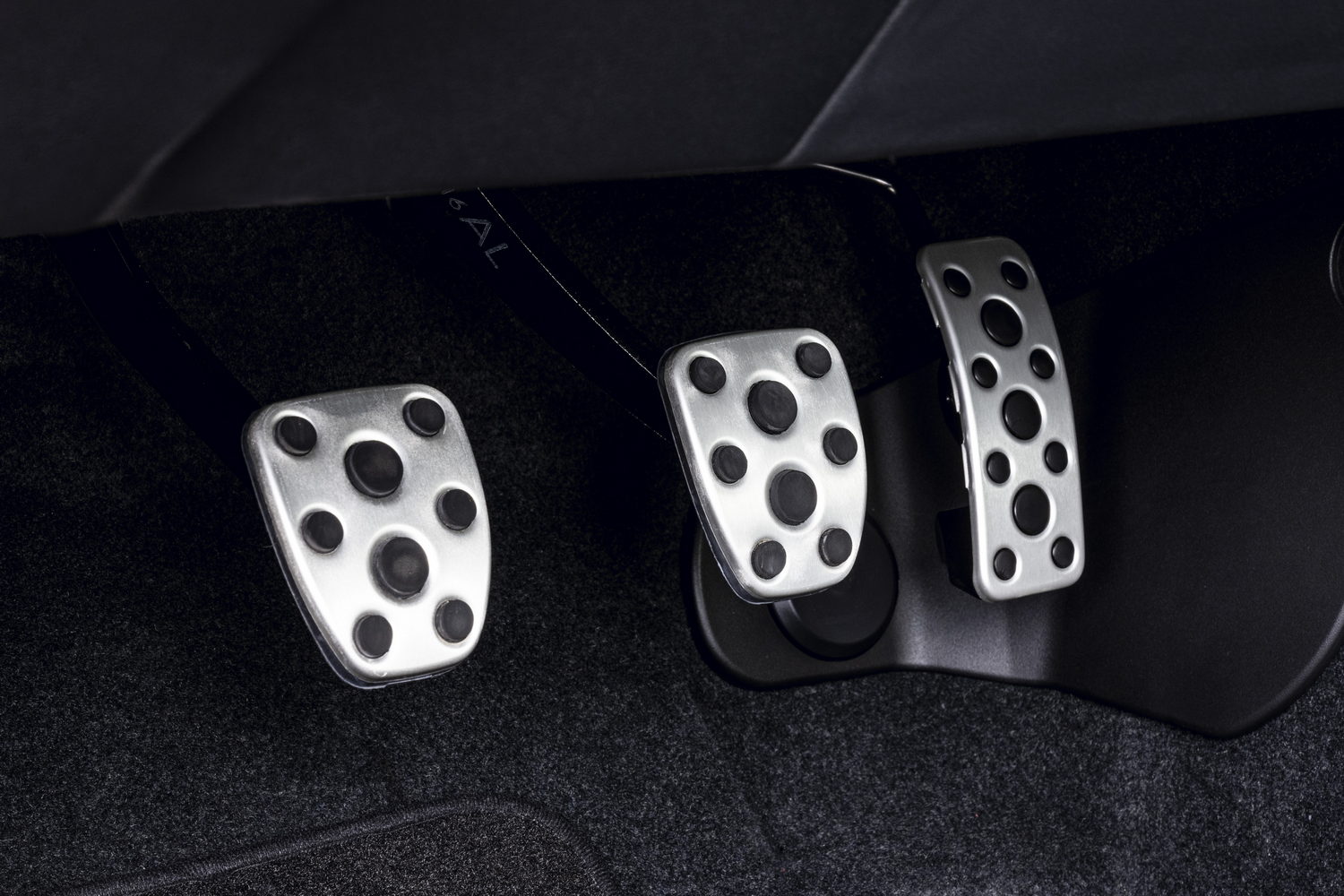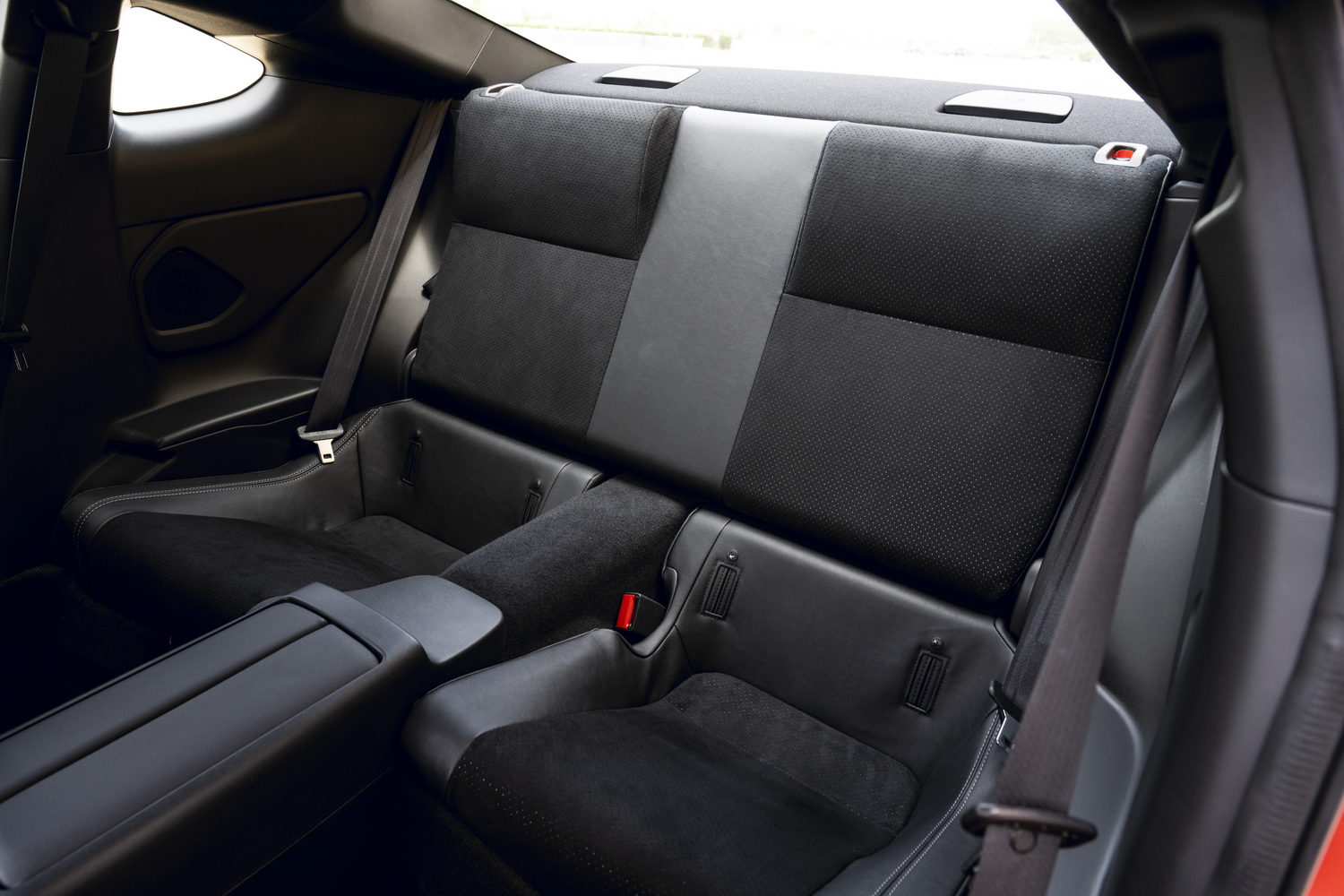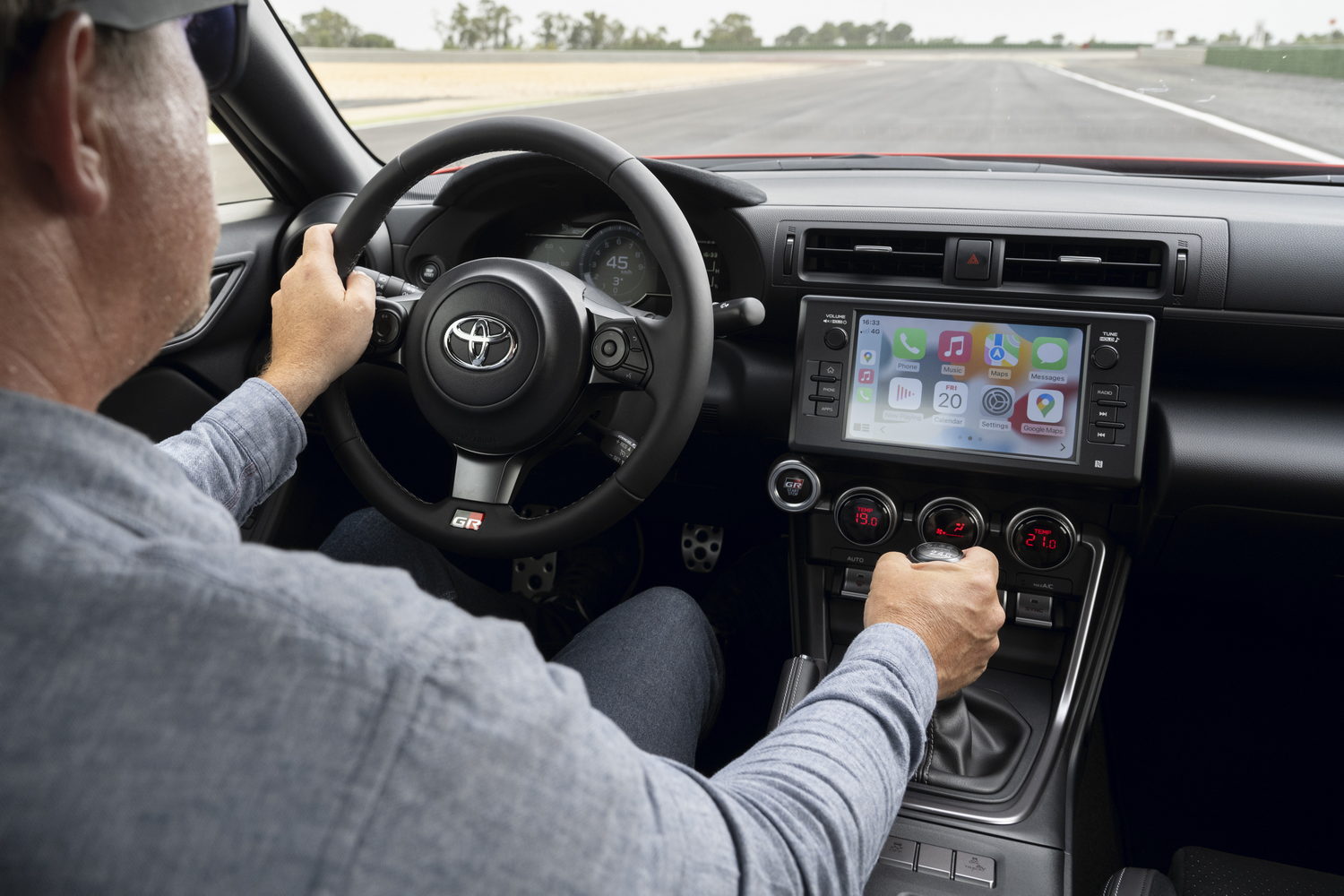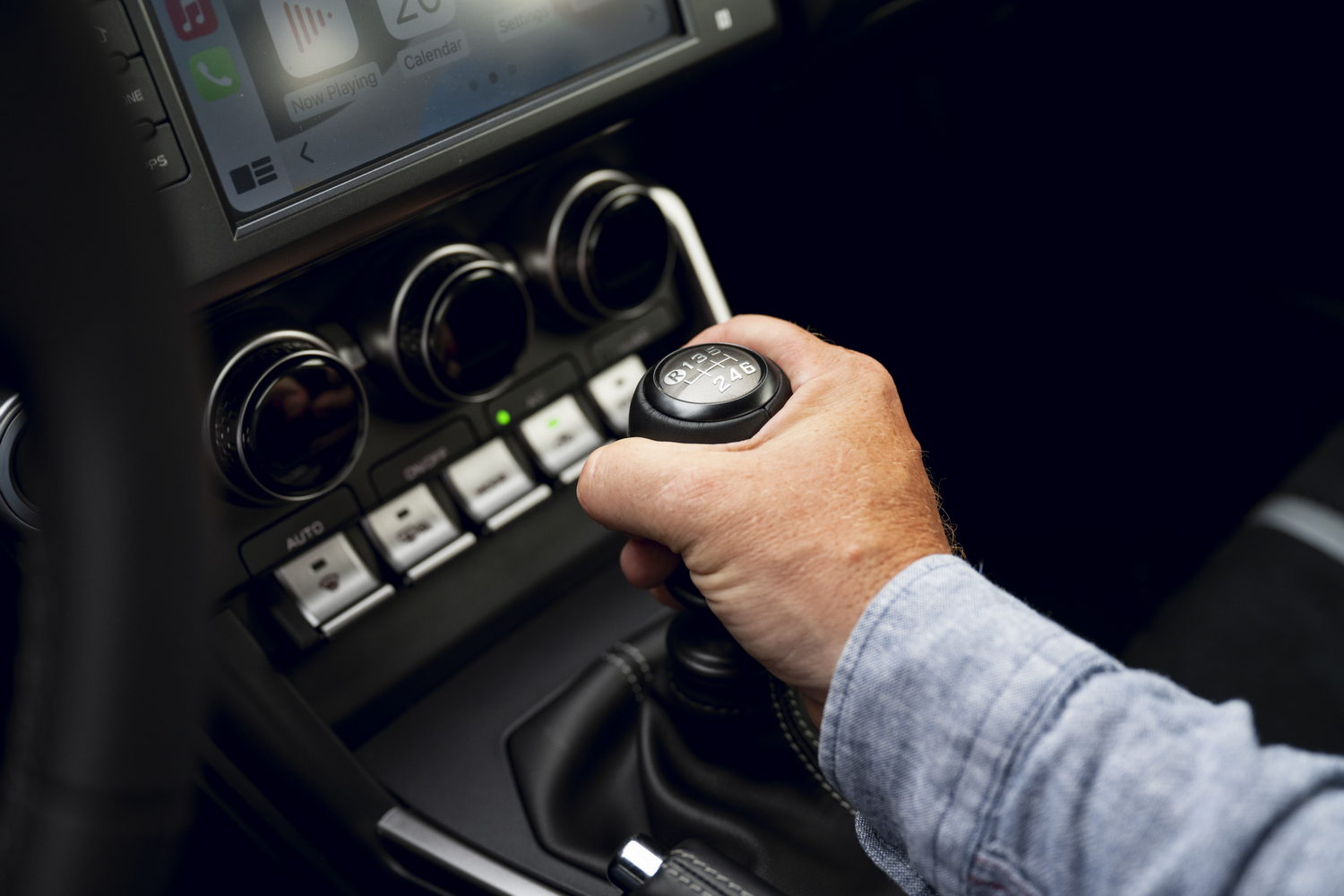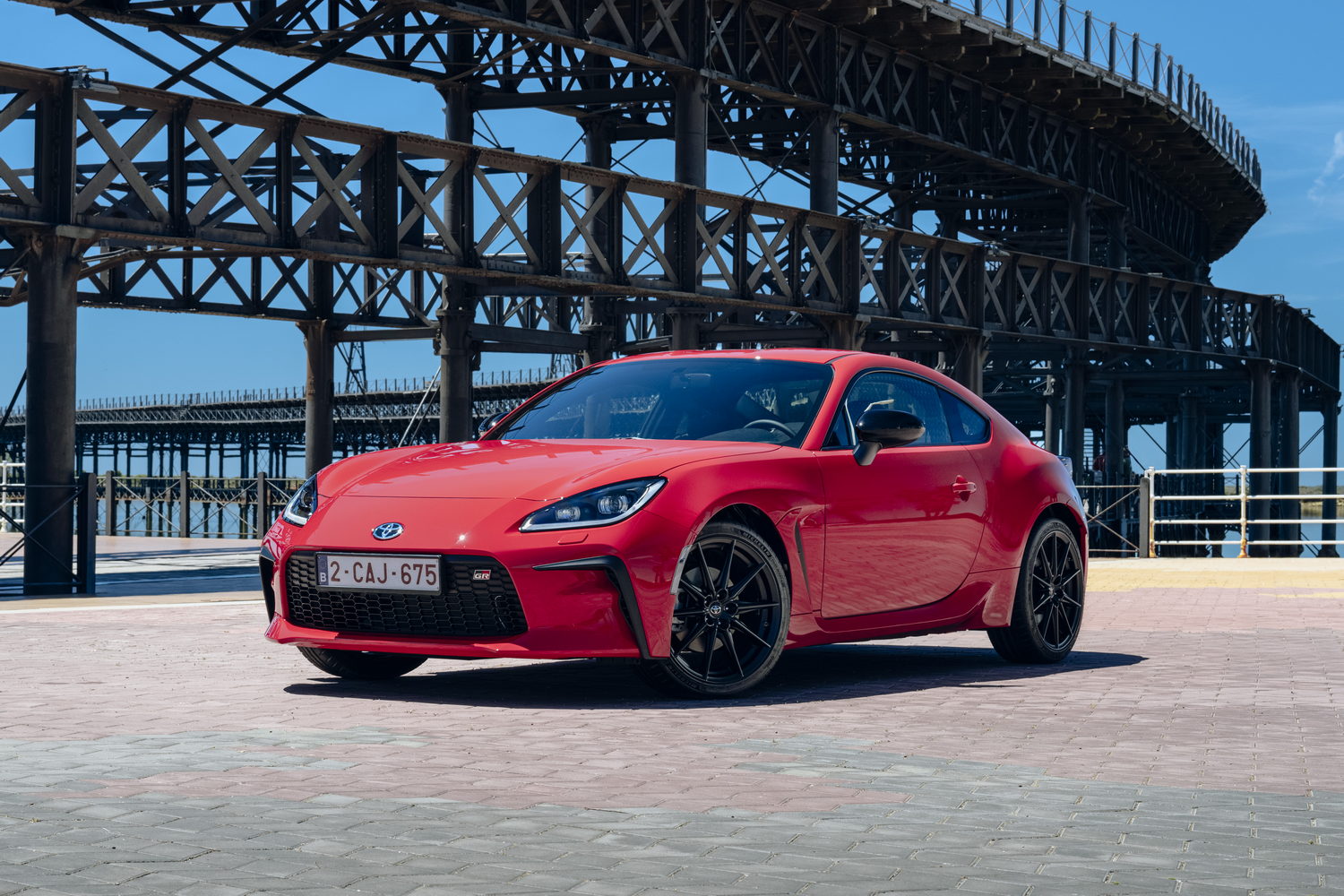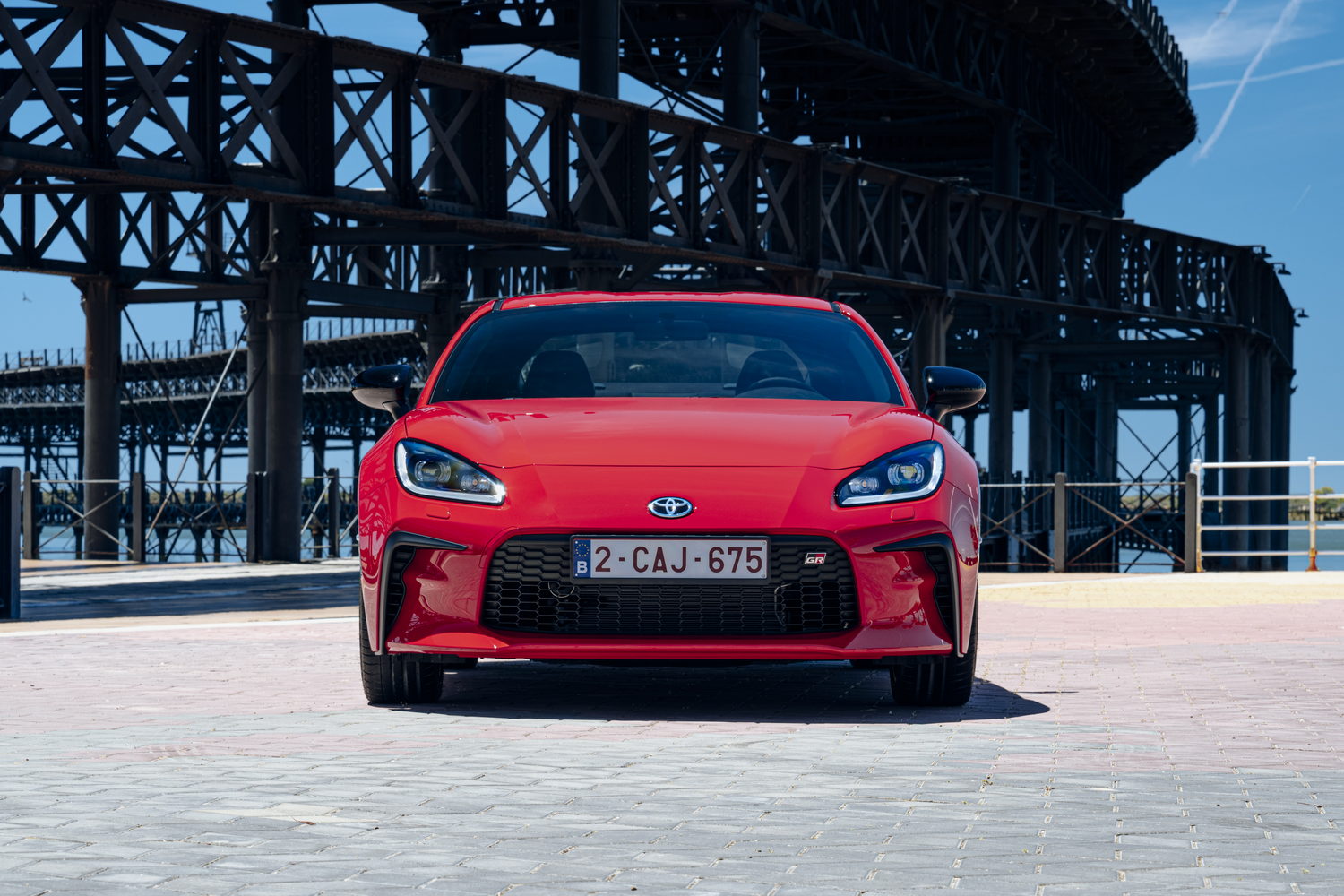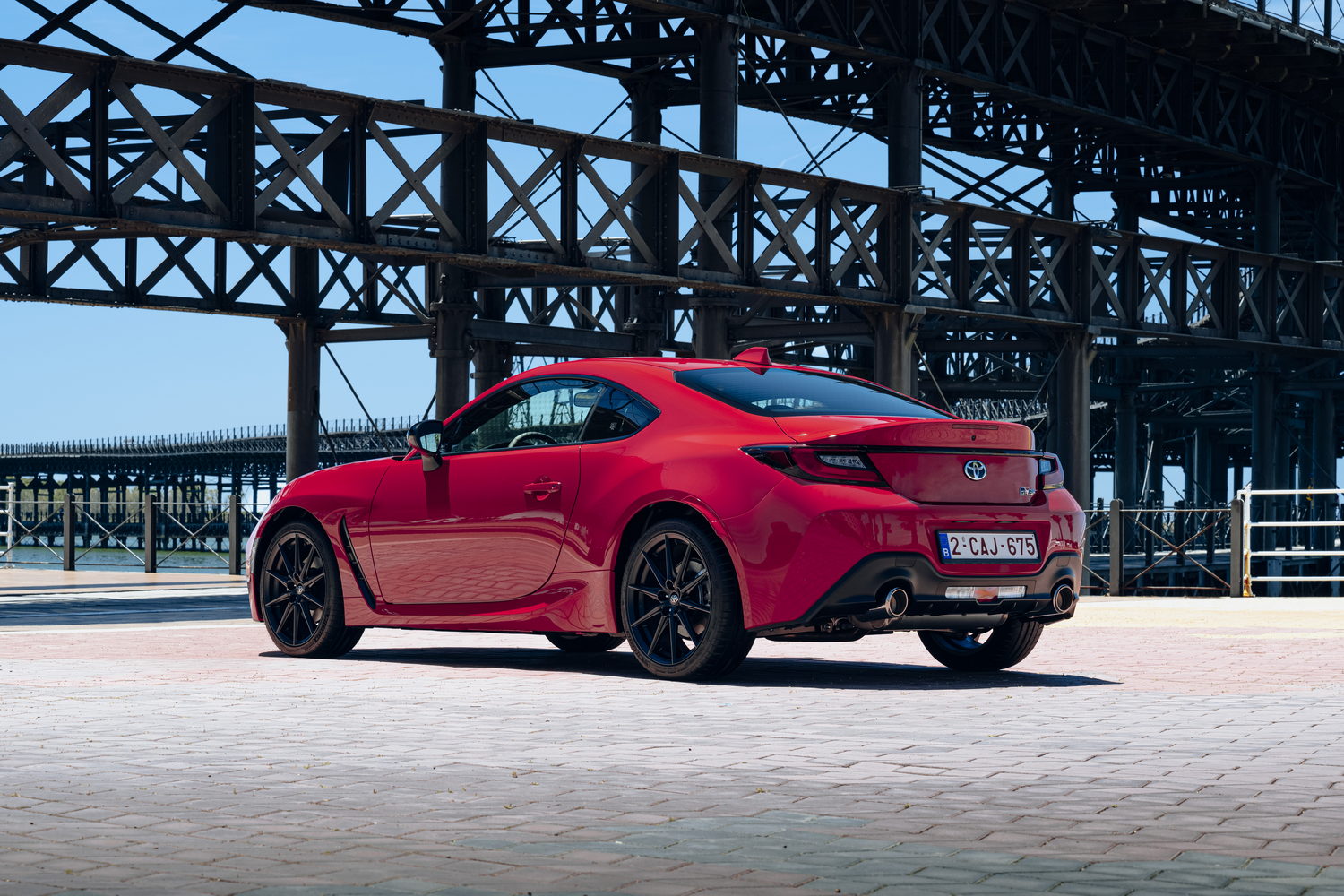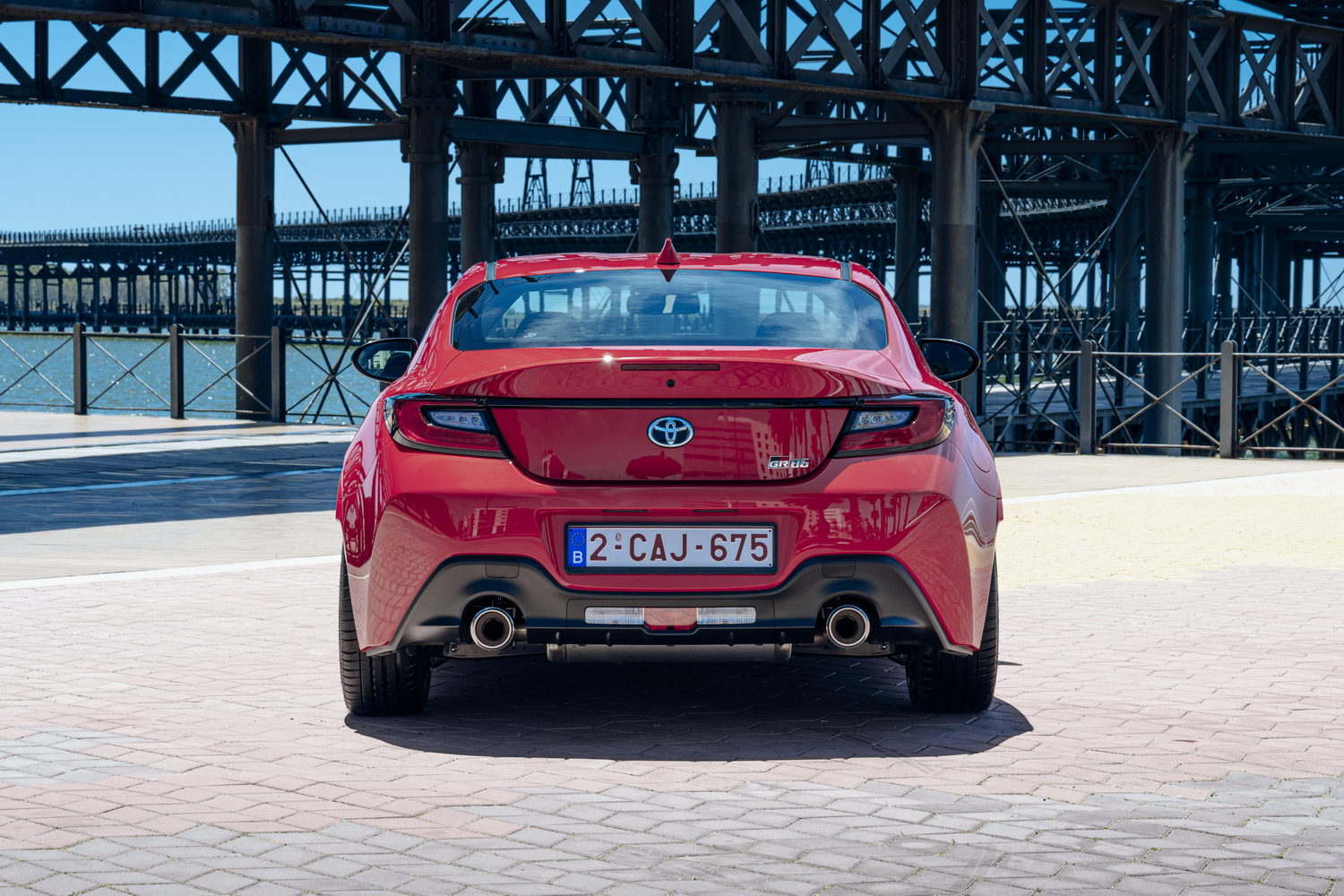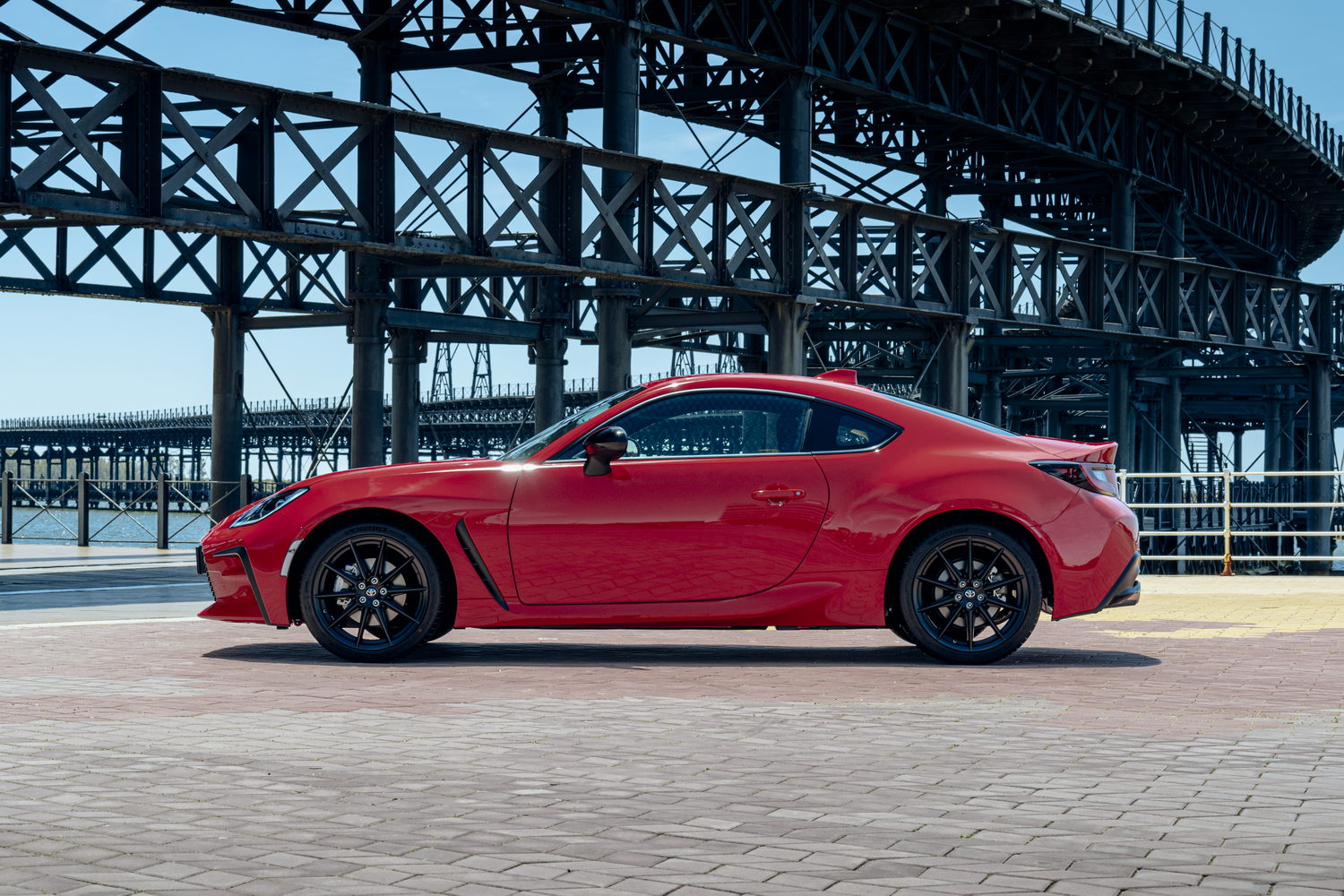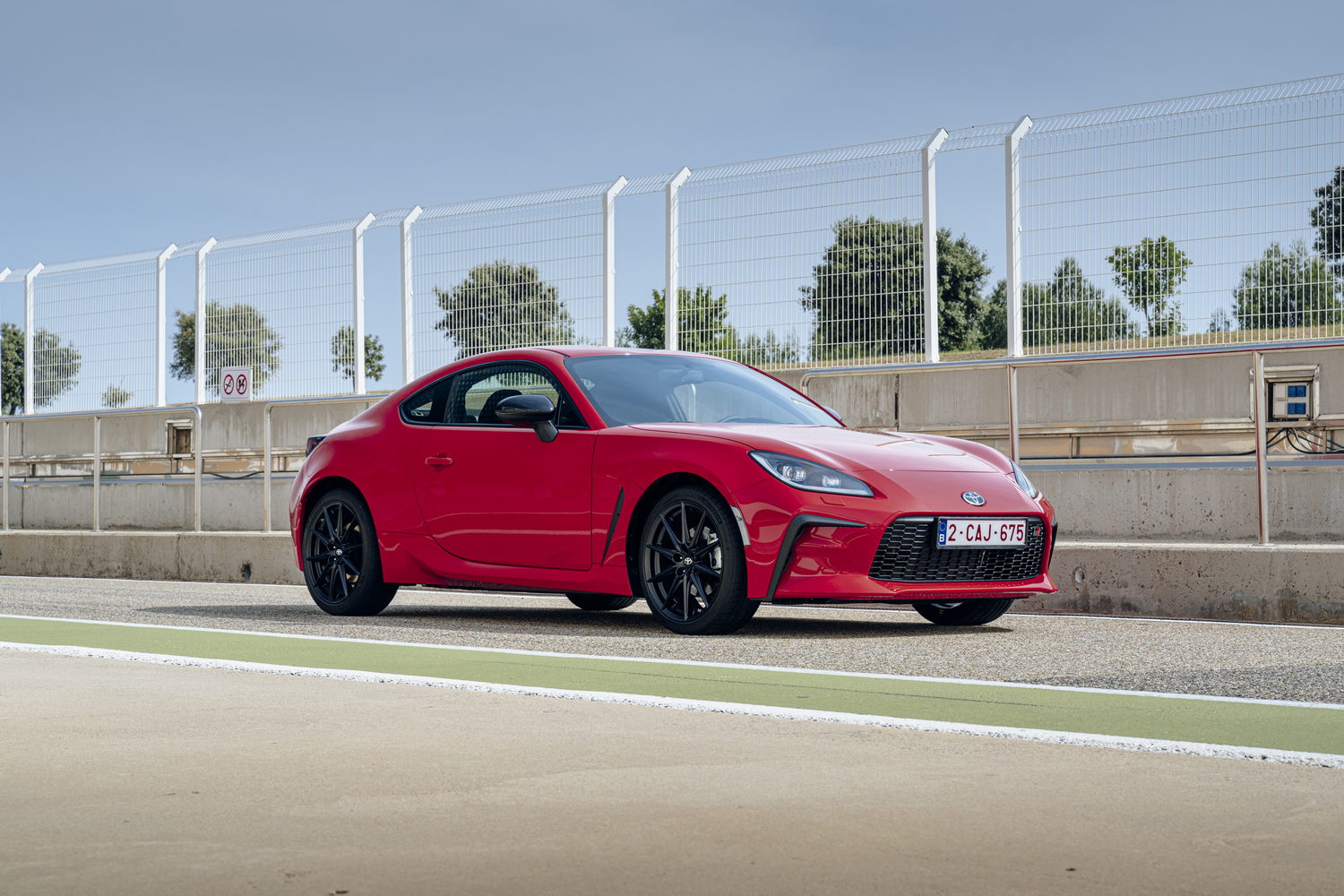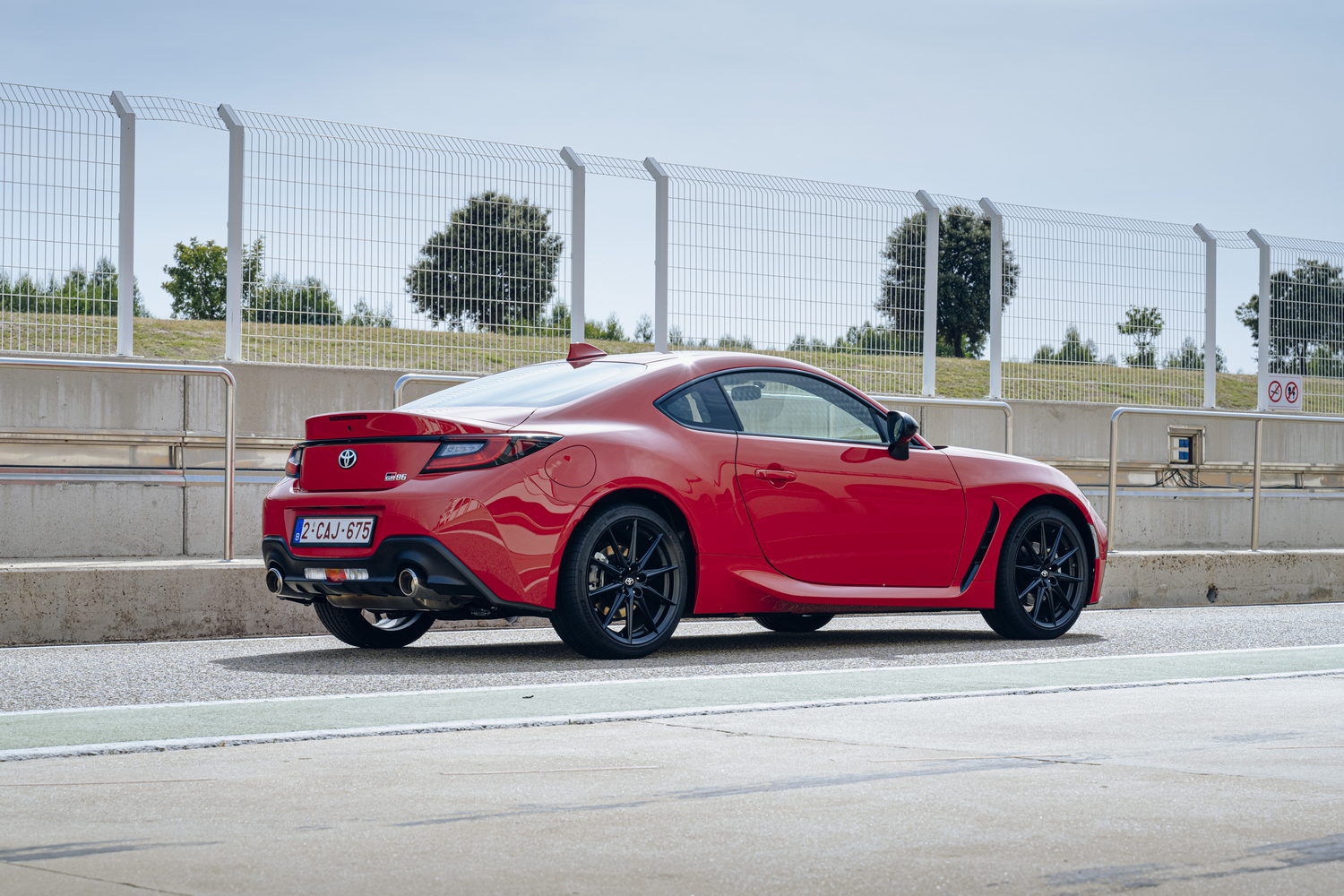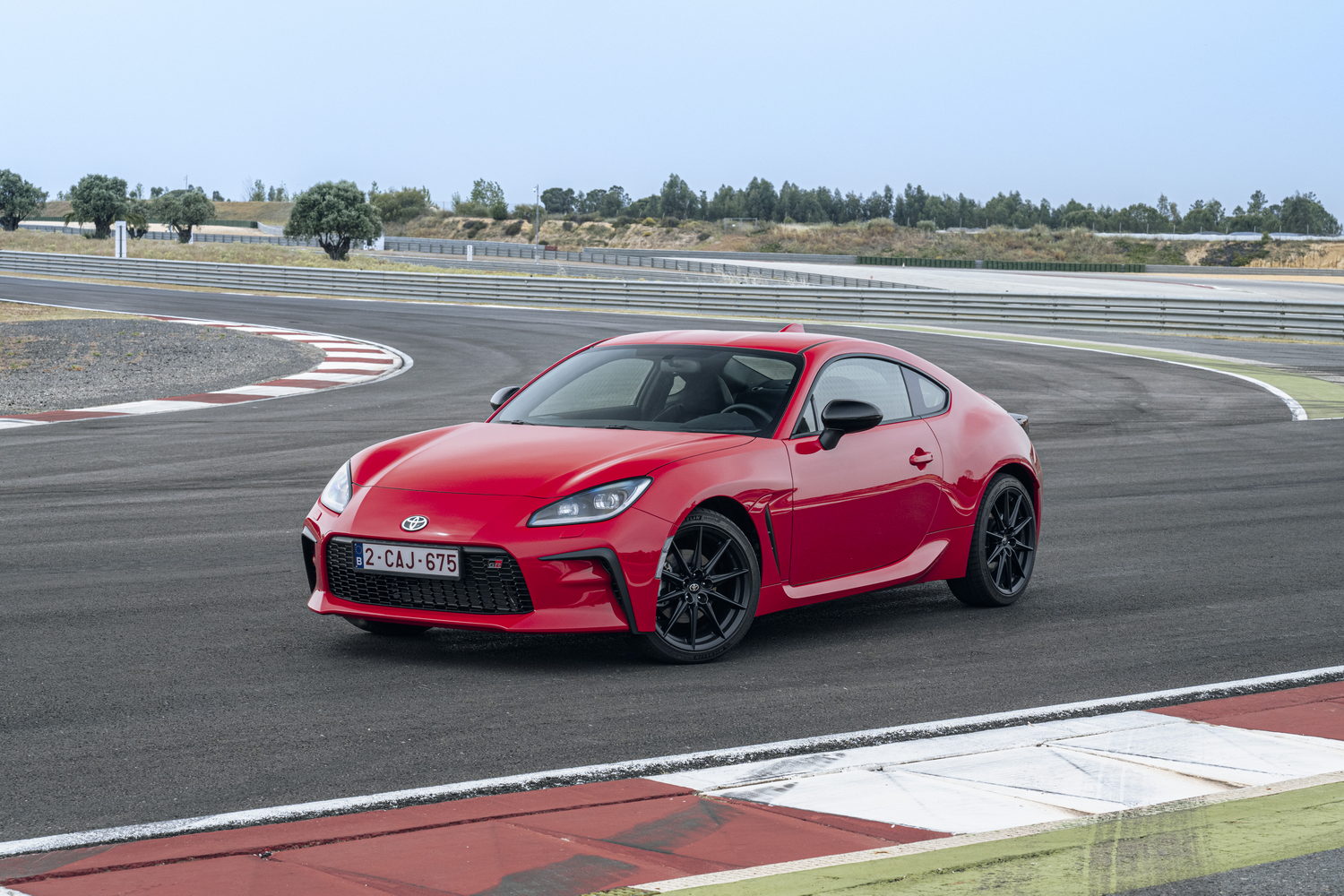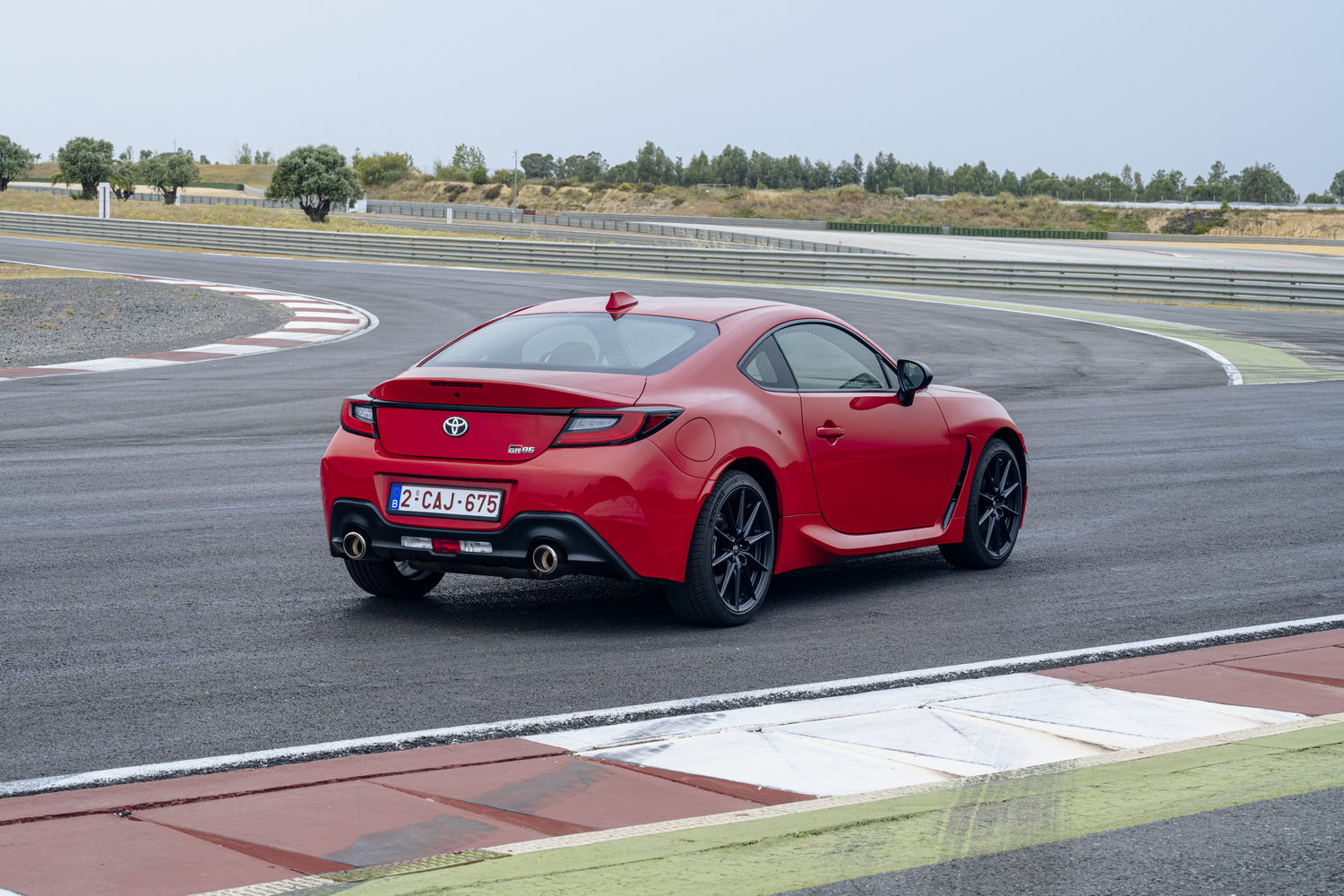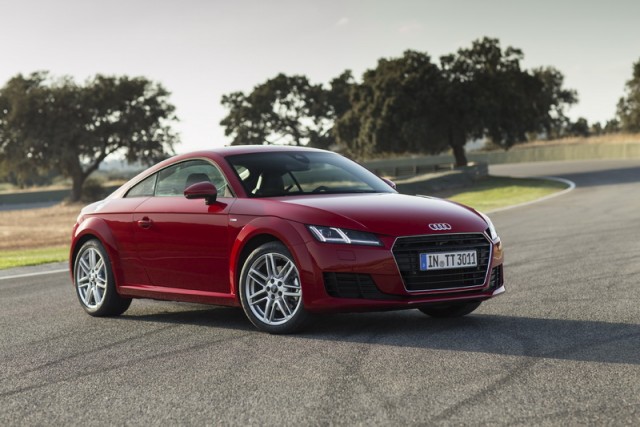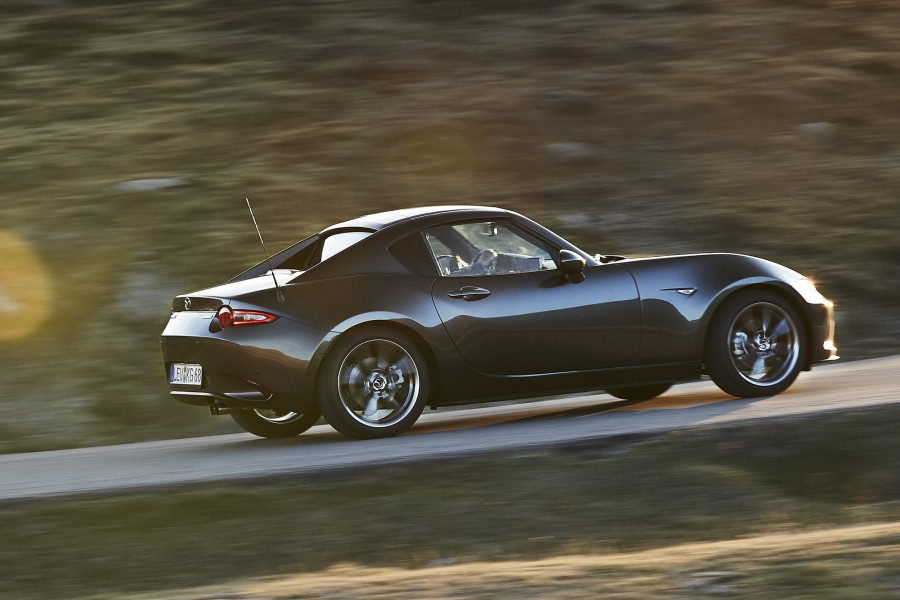When the Toyota GT86 was launched way back in 2012, it was an instant hit among motoring journalists. But while the media loved its lightweight, back-to-basics approach and grin-inducing oversteer, customers were somewhat more sceptical. A lack of straight-line performance and a cheap cabin were among the most prominent criticisms. A decade later, Toyota is back to right the wrongs, creating the new GR86. Swapping the T for an R is just the start of the changes, which include fitting a larger and more powerful engine, as well as improving the handling. But will that broaden the appeal of Toyota's little coupe?
In the metal
The GR86 is being touted as a new model, but it's really an evolution of the Toyota GT86 that came before. Yes, it looks subtly different, and it has a new engine, but the basic recipe is the same: it's a two-door, rear-wheel-drive, 2+2 coupe with a focus on driver enjoyment over all other considerations.
That, combined with the GT86 genes, means the overall look is quite familiar. There's a long bonnet and a stubby rear end, with the driver positioned pretty much halfway between the front and rear wheels. The low, flat nose comes courtesy of the naturally aspirated flat-four 'boxer' engine stowed under the bonnet, and it's designed to keep all the weight as low down in the bodywork as possible, in a bid to maximise cornering performance.
But if all that feels much the same as before, there are noticeable differences. The new front end looks more aggressive and allows extra air to cool the larger and more powerful 2.4-litre engine, which is essentially an evolution of the old 2.0-litre unit in the GT86. There are aerodynamic vents behind the front arches, there are bespoke Michelin tyres and the whole car sits 10mm closer to the road.
Inside, the atmosphere is remarkably similar, with a dark and compact cockpit and a driver-orientated design. There aren't too many frills - it's all quite sober - but there's a more modern touchscreen infotainment system and a digital instrument cluster. The former isn't brilliant, because the graphics and functionality feel olde-worlde compared with the more modern display in the (more or less retired) Audi TT, for example, but the digital instrument cluster works well, offering different readouts depending on which mode the car is in. All are clear and easy to read, if not especially exciting to look at.
Cabin quality has improved compared with the GT86, but not as drastically as Toyota would have you believe. There are some softer materials, and everything feels built to last, but some cheap plastics and lightweight switches let the side down a little. That said, perhaps some thin plastics simply help the car to weigh as little as possible. Toyota says the GR86 is 10kg lighter than a similarly equipped version of its predecessor.
We suspect the real reason for that, however, is the way the GR86 has been built. Using aluminium for the roof, bonnet and front wings has shaved away some weight, as has the use of lighter front seats and a lightweight drive shaft. And that has still made a difference despite Toyota's strengthening of the GR86's platform, using more high-tensile steel in the body to ensure the car is as rigid, and therefore as responsive, as possible.
All these sporty upgrades mean practicality takes a back seat - or at least it would if anything could fit in the back of the GR86. As was the case with its predecessor, the back seats are something of a token gesture. Kids might get in there, as long as neither they, nor those in the front, are particularly long of leg, but adults would need to be award-winning contortionists to fit in. At least there's a reasonably big boot, measuring 226 litres - enough for a spare set of race-spec tyres for track days, Toyota claims.
That lack of space is not really an issue, though. The back is big enough for your suitcases and the rear seats make an acceptable parcel shelf, so it's easy to have a long weekend away for two in the GR86. And as an enthusiast product designed for enthusiastic drivers, it's accepted that this won't be brilliant on the school run.
Driving it
That said, Toyota is adamant that the GR86 was designed to bring "excitement to the daily commute", and the Japanese company insists that the GR86 is an enjoyable driver's car you can use every day. To that end - and to prevent the GR86 from competing with its big brother, the GR Supra - the engineers have shied away from giving the car too much power.
So the old 200hp 2.0-litre petrol engine has been swapped for a 2.4-litre unit, but it still doesn't have a turbocharger. Nonetheless, Toyota has made changes to ensure the new motor's power output is more consistent across the rev range. In total, the 2.4-litre GR86 pumps out 234hp and 250Nm of torque, allowing it to sprint from 0-100km/h in just over six seconds. It's a noticeable improvement on the GT86's 7.6-second 0-100km/h time, and it definitely gives the car a bit more punch.
Without a turbocharger, the engine still needs to be worked hard, and it relishes that challenge, revving freely right the way to the 7,500rpm redline. With just four cylinders, the engine doesn't make that impressive a sound low down, but the flat buzz becomes a more visceral scream above around 5,000rpm, and that encourages you to keep wringing the engine's neck. Toyota has fitted a system that pipes engine noise through the speakers in a bid to bring you closer to the action, and although such fripperies are usually pretty naff, the GR86's sound feels very natural and adds a little extra excitement to the experience.
As does the six-speed manual gearbox, which is the standard transmission and is expected to take the lion's share of sales. There is an automatic option, but it's more expensive, slower and less involving, so even Toyota expects sales to be very rare. The manual option is brilliant, with a nicely weighted clutch and a smooth, mechanical-feeling shift action that makes every gear change a pleasure. It just adds to the overall impression of a car that wants to be driven hard.
The same goes for the steering, which is quite light but has plenty of feel, telling you exactly what those Michelin tyres are doing at any given moment. It means you have plenty of confidence in the front end of the car. On a racetrack, that means you can pitch it into corners and use the throttle to control the direction of the nose, which is very good fun. Although the GR86 comes with stickier tyres than the old GT86, it still likes to wag its tail when pushed, and it's easy to induce an impressive slide when the traction control is in its race setting (or switched off altogether). Switching everything off is good fun for those accustomed to drifting, but the race mode will be more than enough for most drivers. It allows the rear of the car to break away quite gently, then helps you to bring everything back into line.
It's bona-fide sports car stuff, but the GR86 is still easy enough to drive on a daily basis. It's still fun at relatively low speeds, which means the Toyota can be enjoyed within the confines of the law, and within drivers' comfort zones. Whereas making the most of a supercar would involve plenty of guts and access to a private track, the GR86 is less threatening to either drivers' health or their licence status.
But perhaps the most impressive aspect of the GR86 is the suspension, which manages to be supple and sporty all at once. Perceived wisdom suggests handling and comfort are usually traded against each other - comfortable cars don't usually handle well, and stiff cars generally respond better - but that just isn't the case with the GR86. Yes, you can feel the inherent rigidity of the structure, but the ride isn't too stiff or jarring over the majority of bumps. One or two will give you a bit of a kicking, but most are fine and it's particularly impressive on the motorway. And while the suppleness means it rolls a little in corners, that just allows you to feel the car's weight moving around, giving you advance warning of when and whether the slide will start.
It isn't all good news, however. While the GR86 might be comfortable on the motorway, it's decidedly noisy at a cruise, with a constant boom reverberating around the cabin and plenty of wind noise over the bodywork. Perhaps Toyota decided purists wouldn't care about soundproofing, but there are times when even the most enthusiastic drivers just want to get home in comfort and peace.
And while the light-ish controls make the GR86 easy enough to drive around town, the poor visibility over the driver's shoulders can make lane changes a challenge on busy roads. Thankfully, there's a rear-view camera and some parking sensors to take some of the stress out of low-speed manoeuvres.
What you get for your money
Toyota is yet to announce pricing for the GR86 in Ireland, so we hope the relatively high emissions (and hence VRT rate) don't make it overly costly. We're hoping for a price tag that's broadly in line with the Mazda MX-5 RF (€37,895) and a little cheaper than the Audi TT (€57,120). That said, we aren't expecting many examples to come to Ireland, so those who get their hands on one will be joining an exclusive club.
We don't know which toys Irish customers will get with their cars, either. In Europe, customers get a choice of two trim levels, with basic cars getting 17-inch alloy wheels (and Michelin Primacy tyres, rather than the custom-made Michelin Pilot Sport 4s on the 18-inch alloys), fabric upholstery and the standard eight-inch central touchscreen. Stepping up to the higher trim level gets you bigger wheels, stickier tyres and suede upholstery, among other goodies. It's likely there's be just one specification offered to Irish buyers.
Summary
The Toyota GR86 is an old-school sports coupe, and it's all the better for that. It's engaging and involving and exciting, but it shouldn't be especially expensive, and it doesn't come with licence-endangering amounts of power. It also manages to iron out some of the GT86's less desirable traits, providing improved cabin quality and a smoother ride. And while talented drivers will get the most from the GR86, it's still easy to drive at everyday speeds by everyday people.
The back-to-basics nature won't be for everyone, but with so few cars available worldwide, demand is certain to outweigh supply. As far as we're concerned, those who get their hands on one are incredibly lucky souls indeed.

